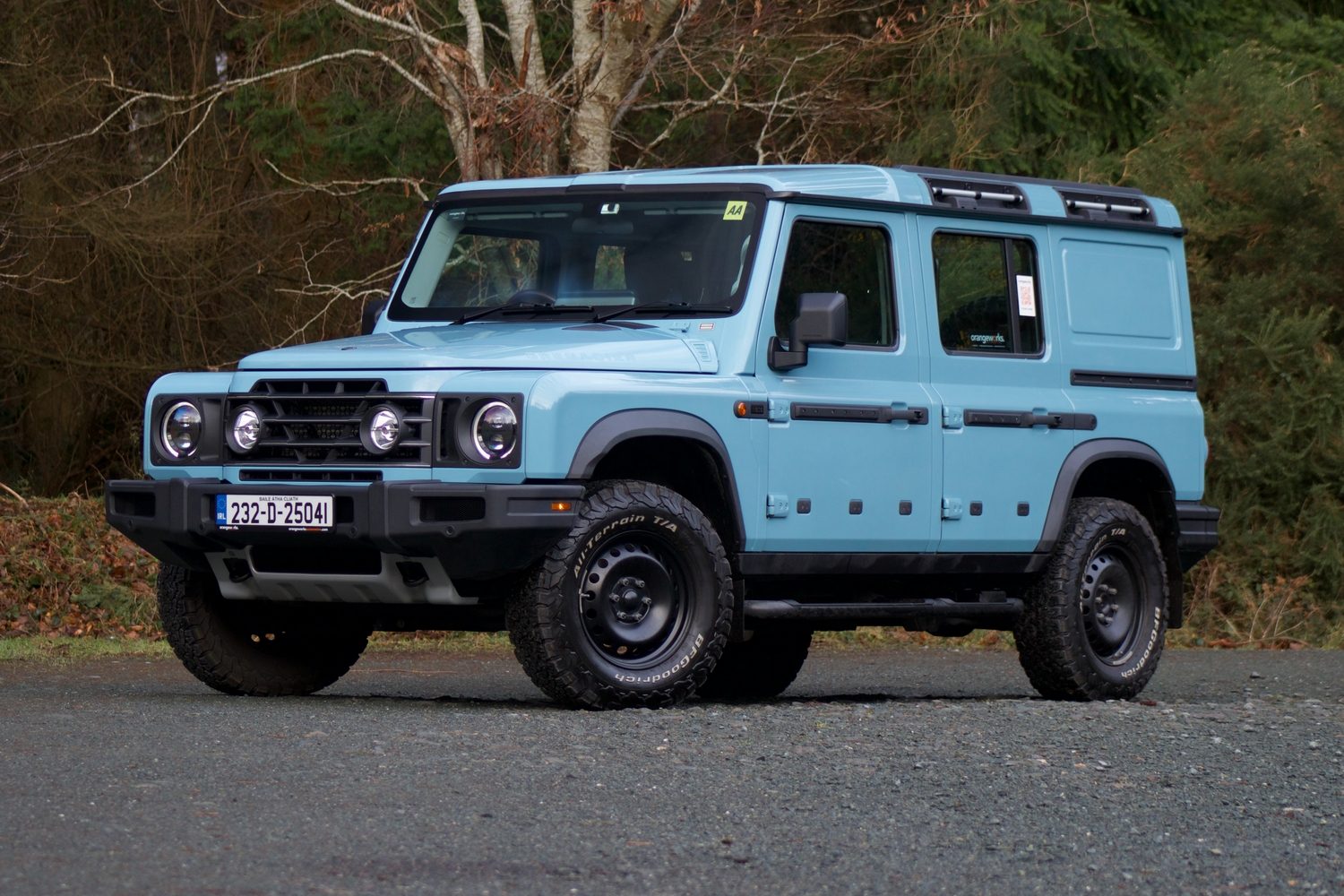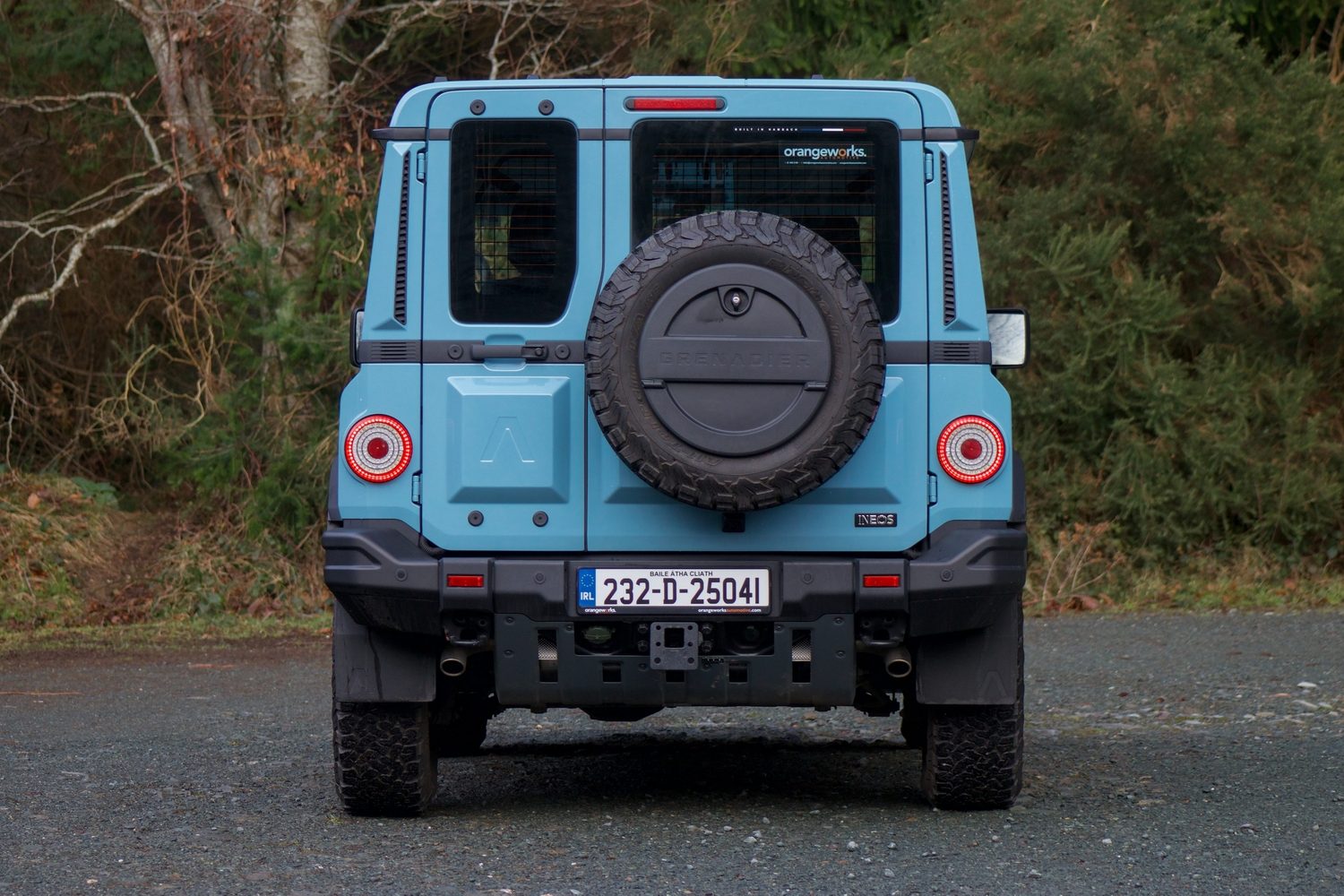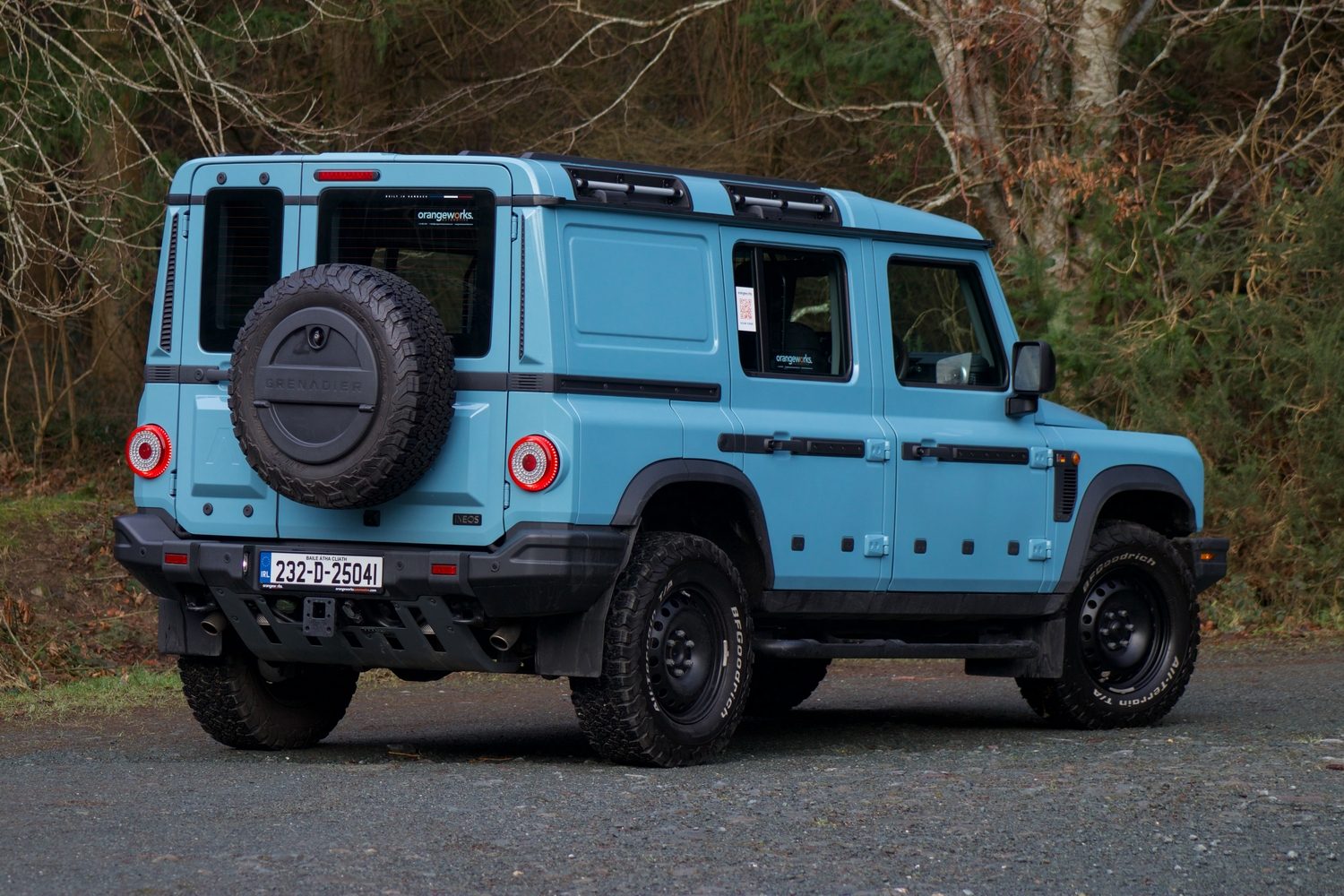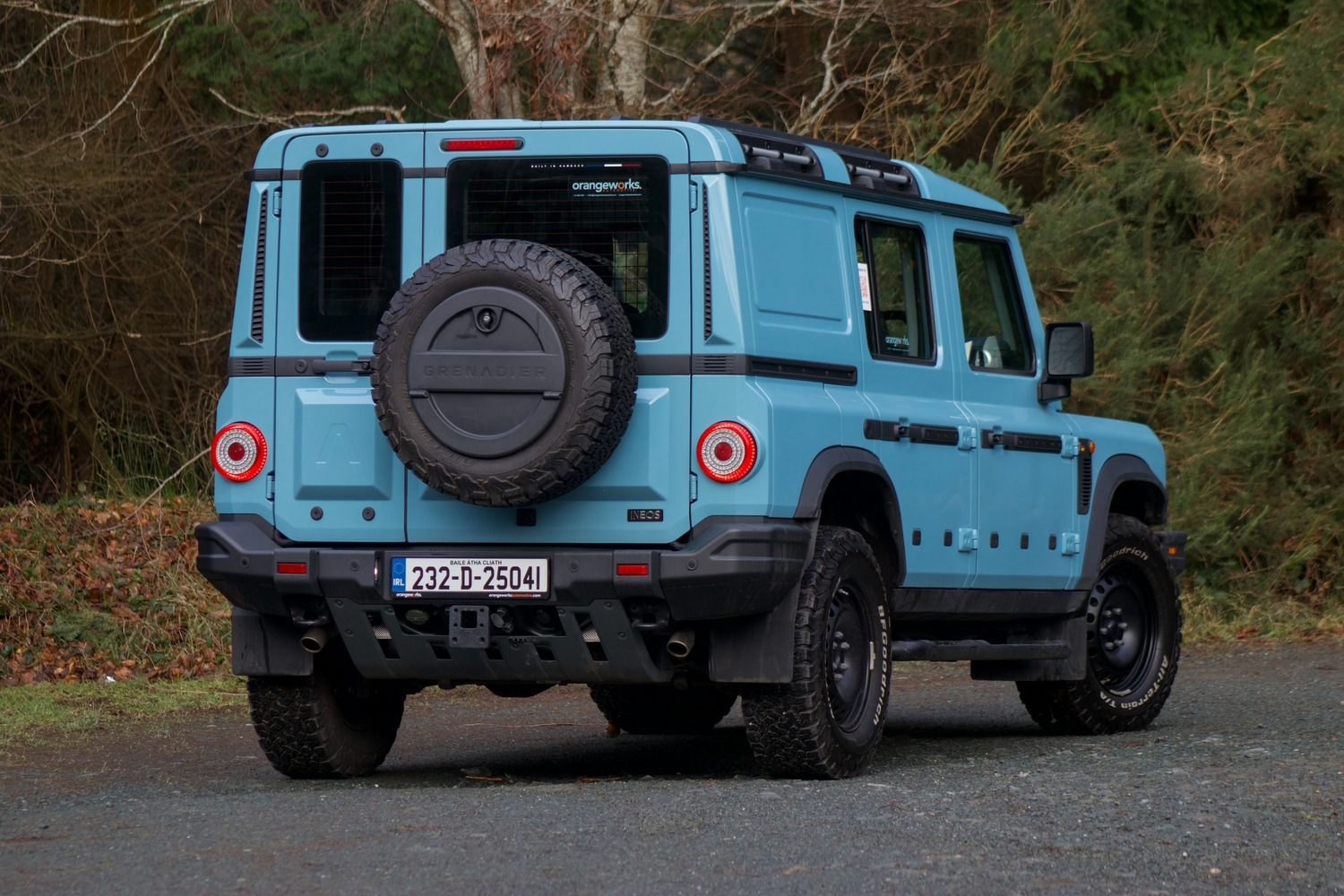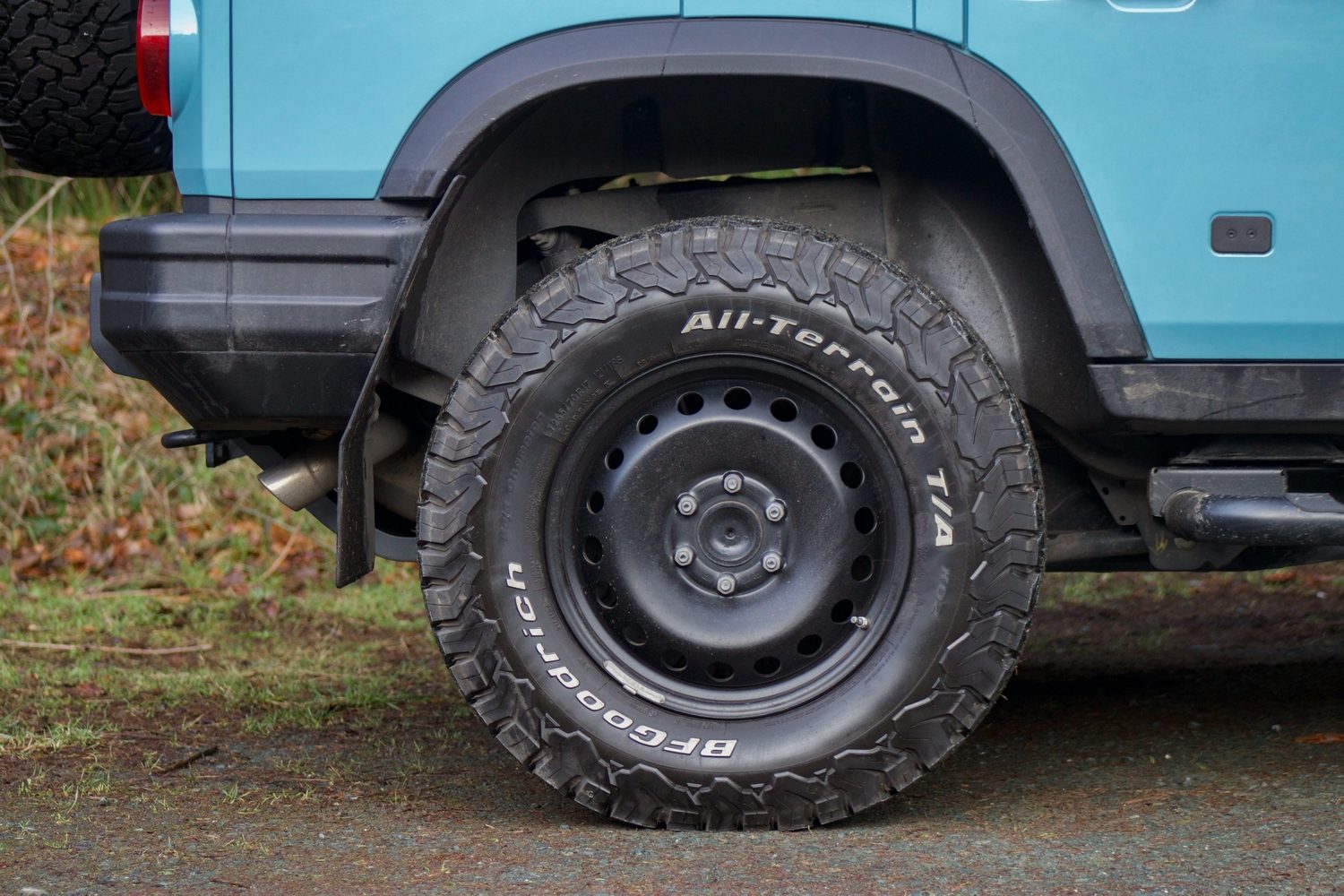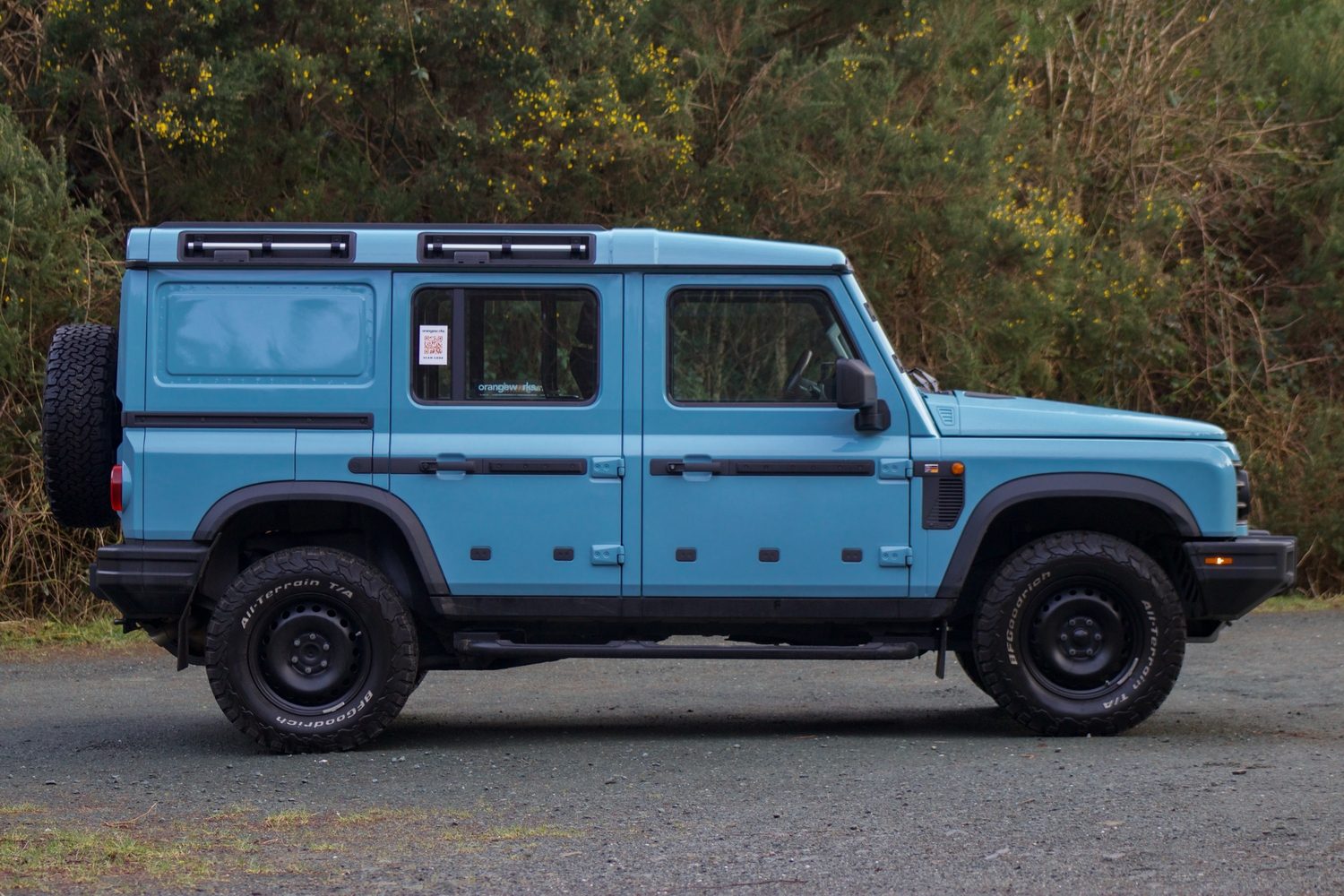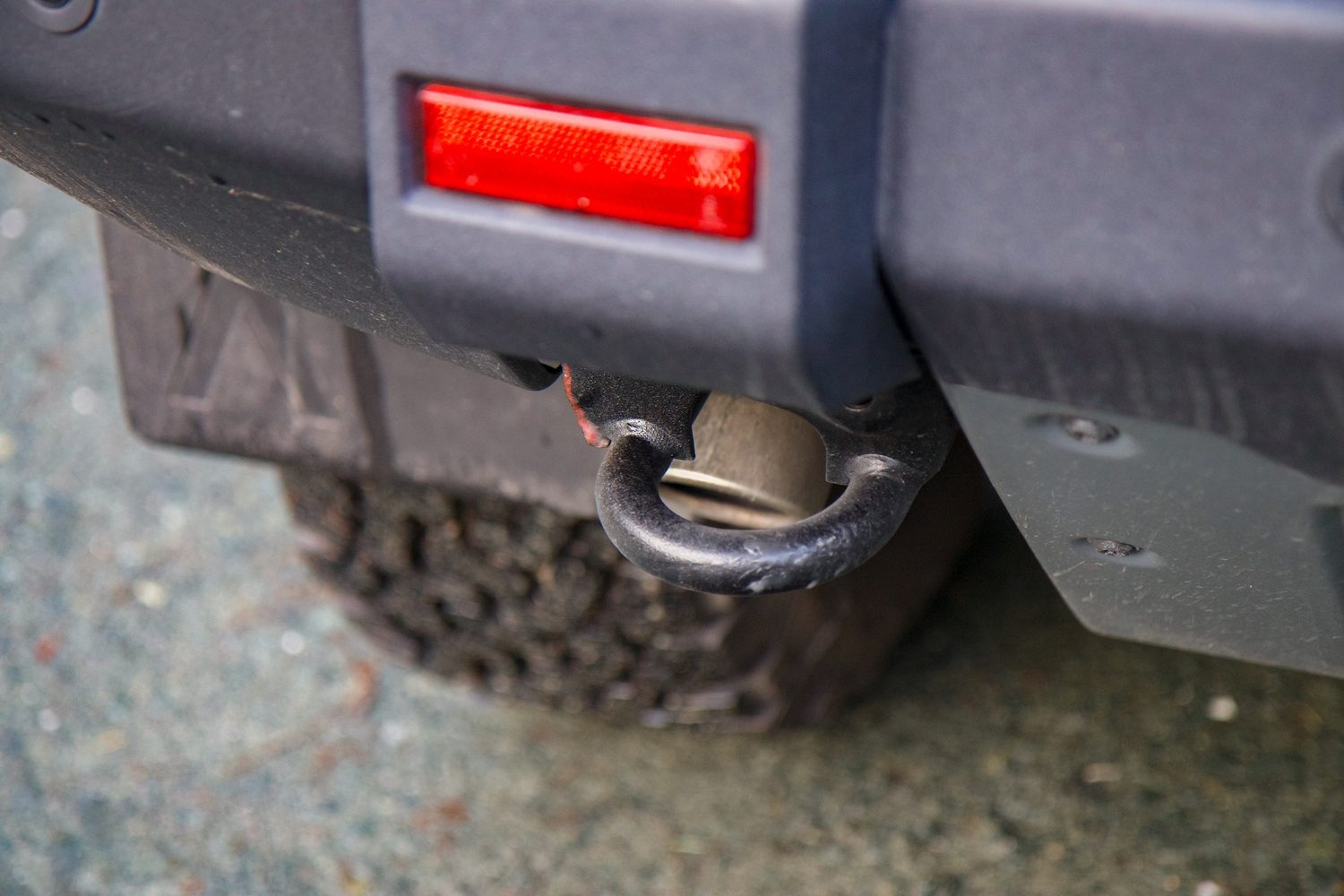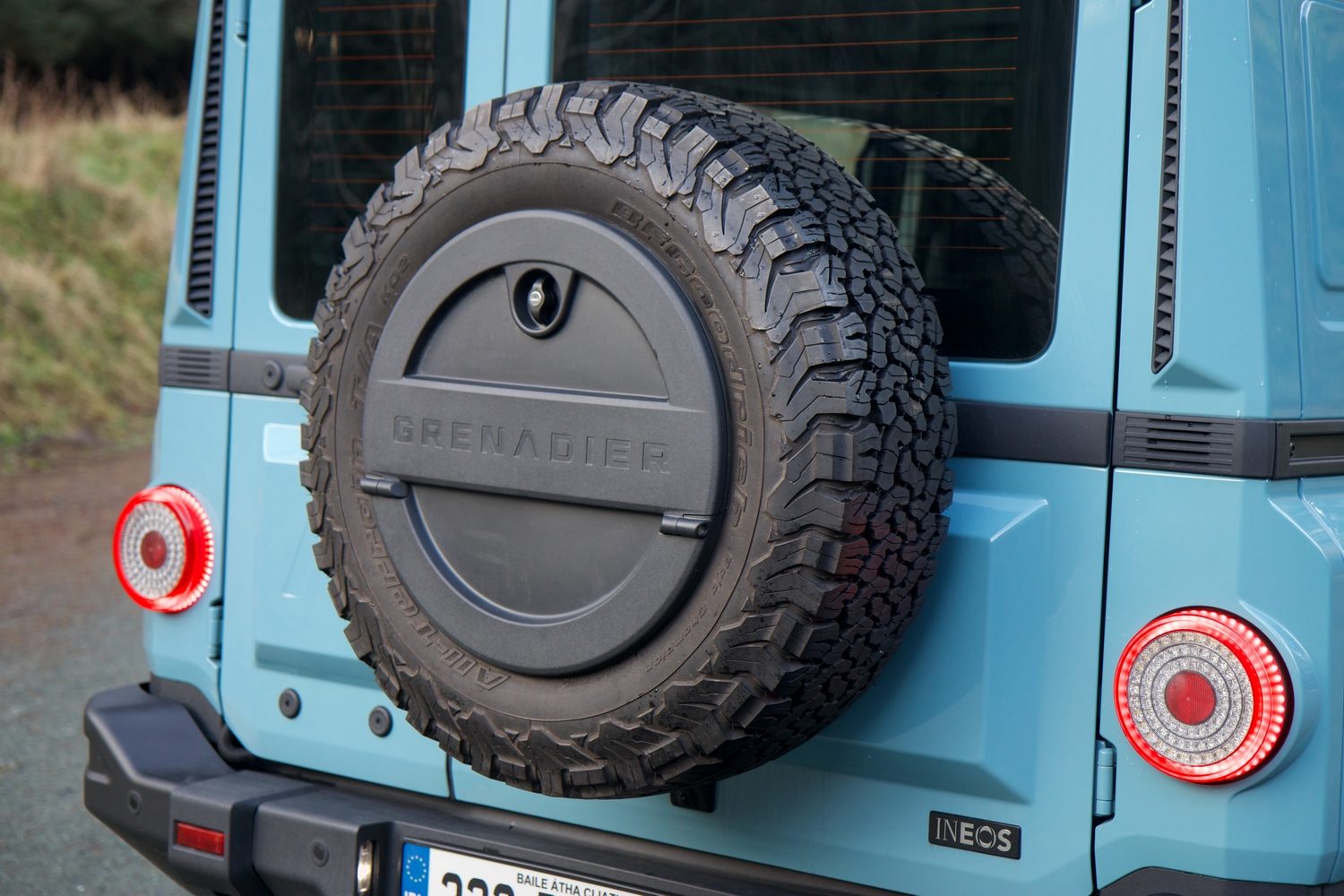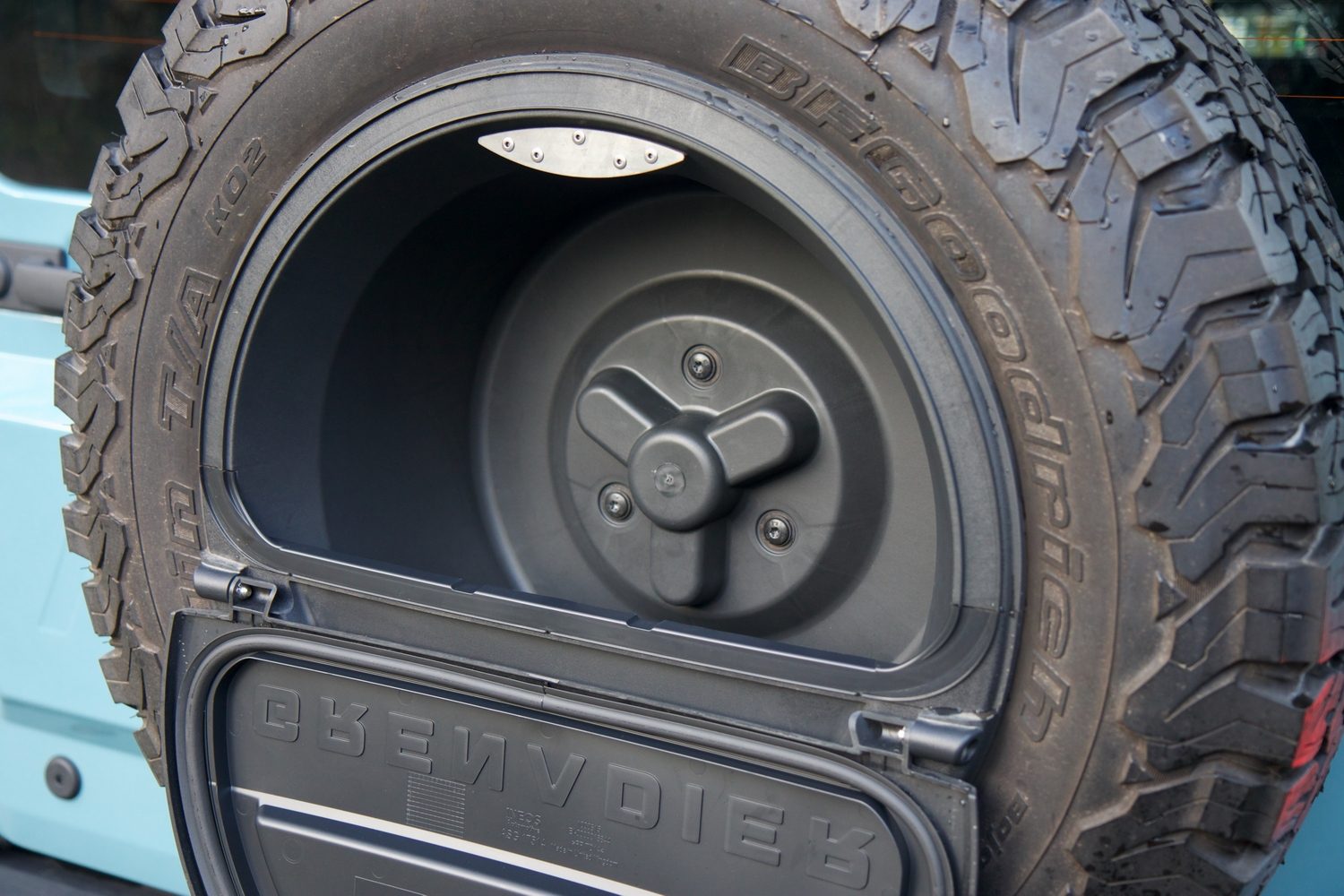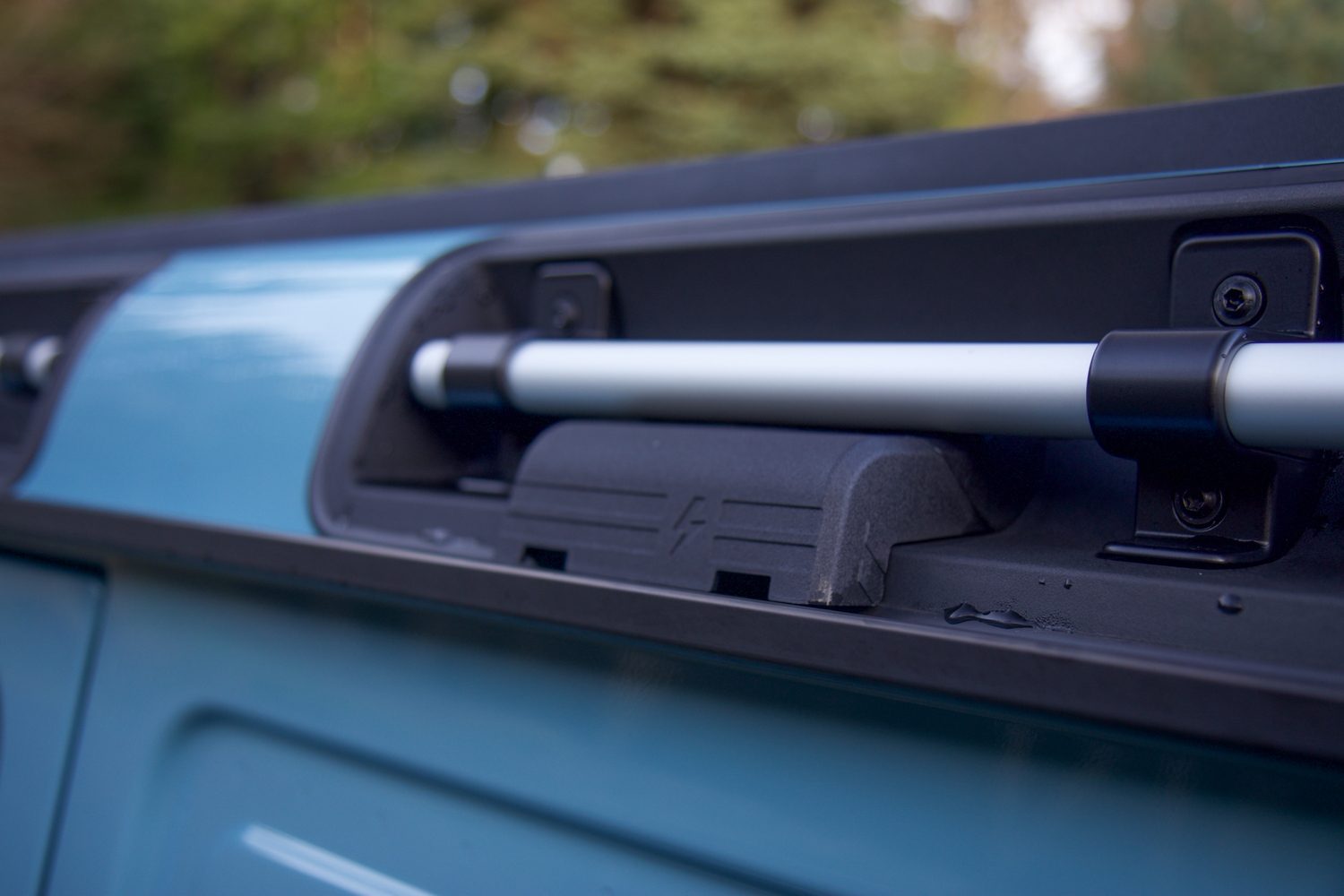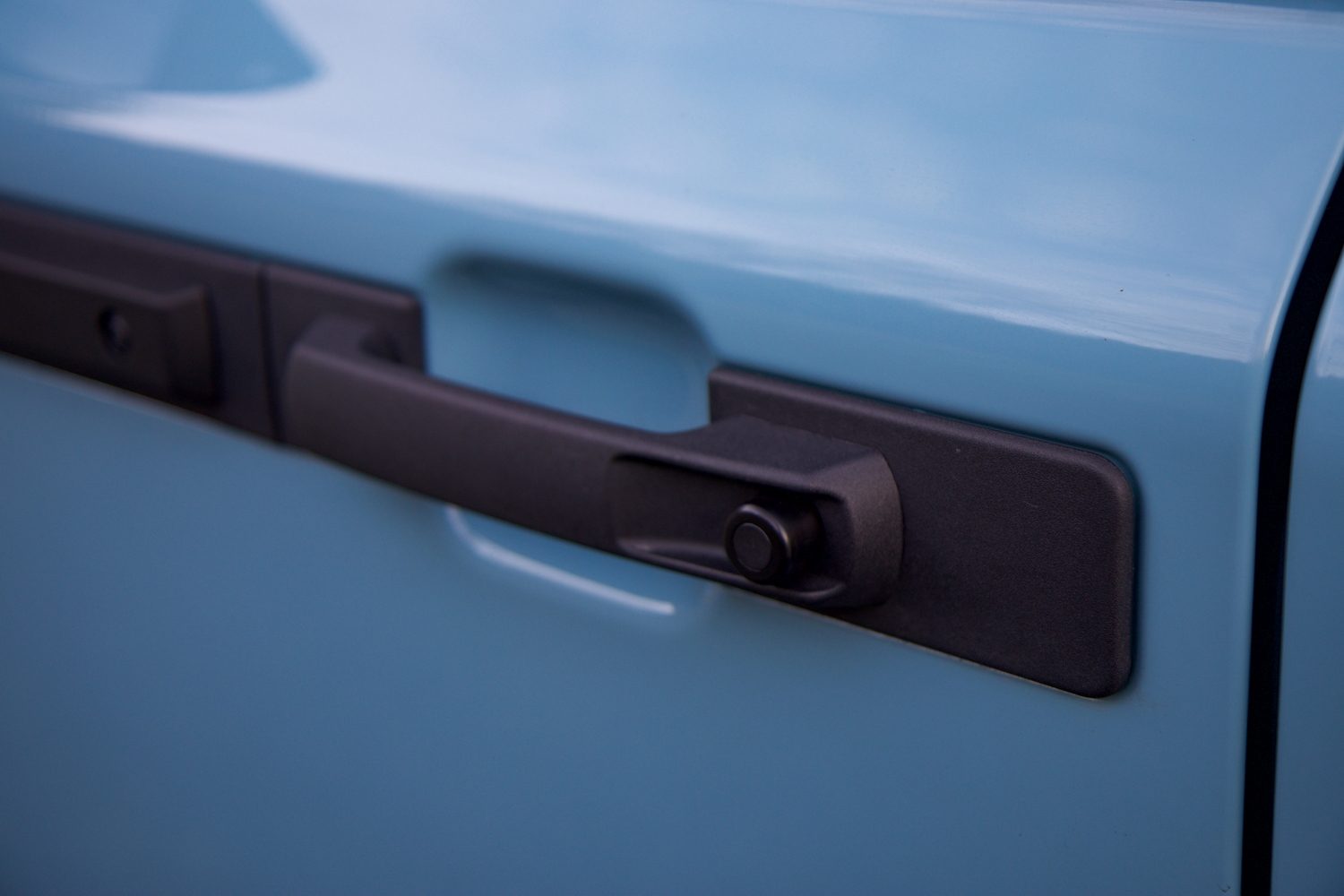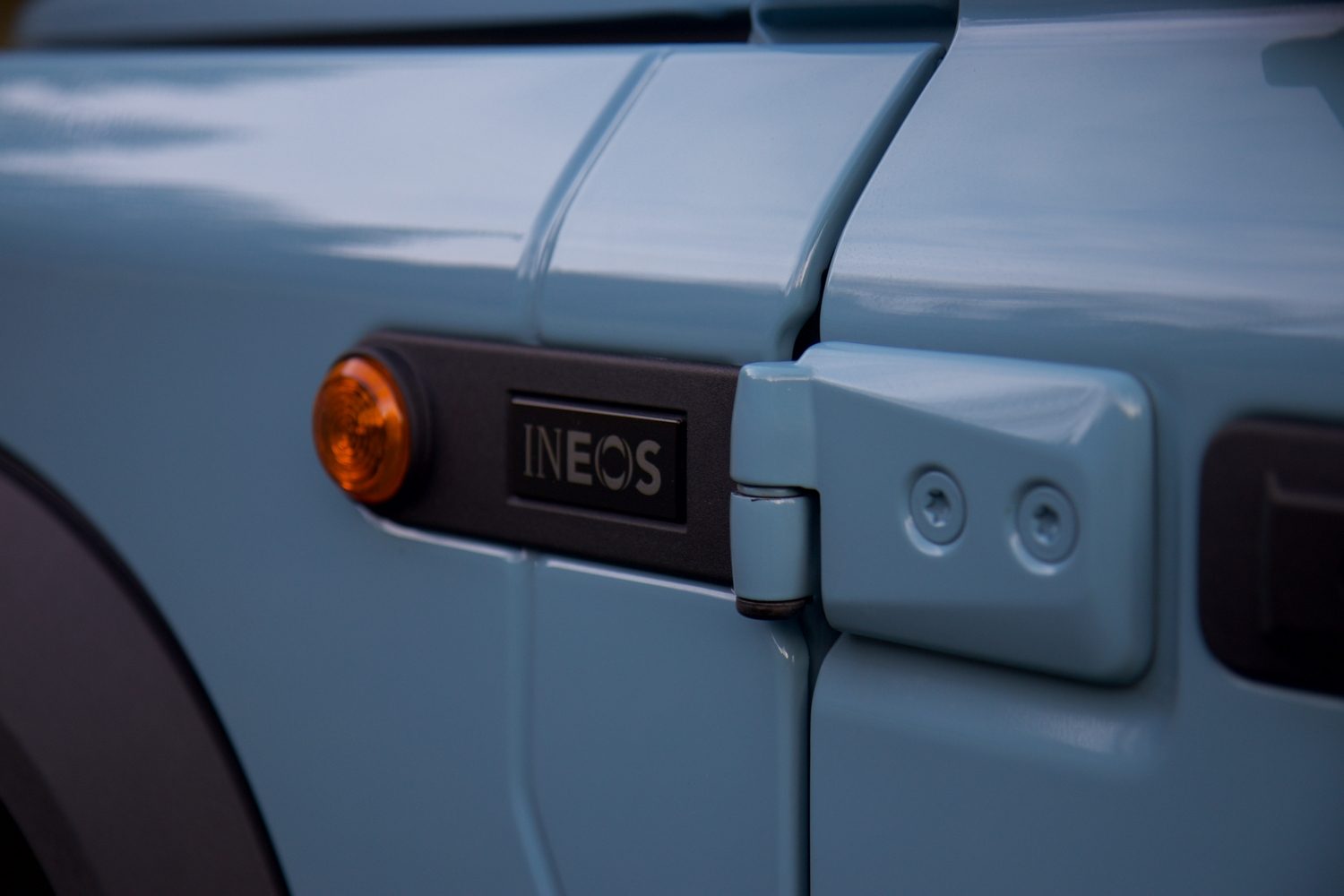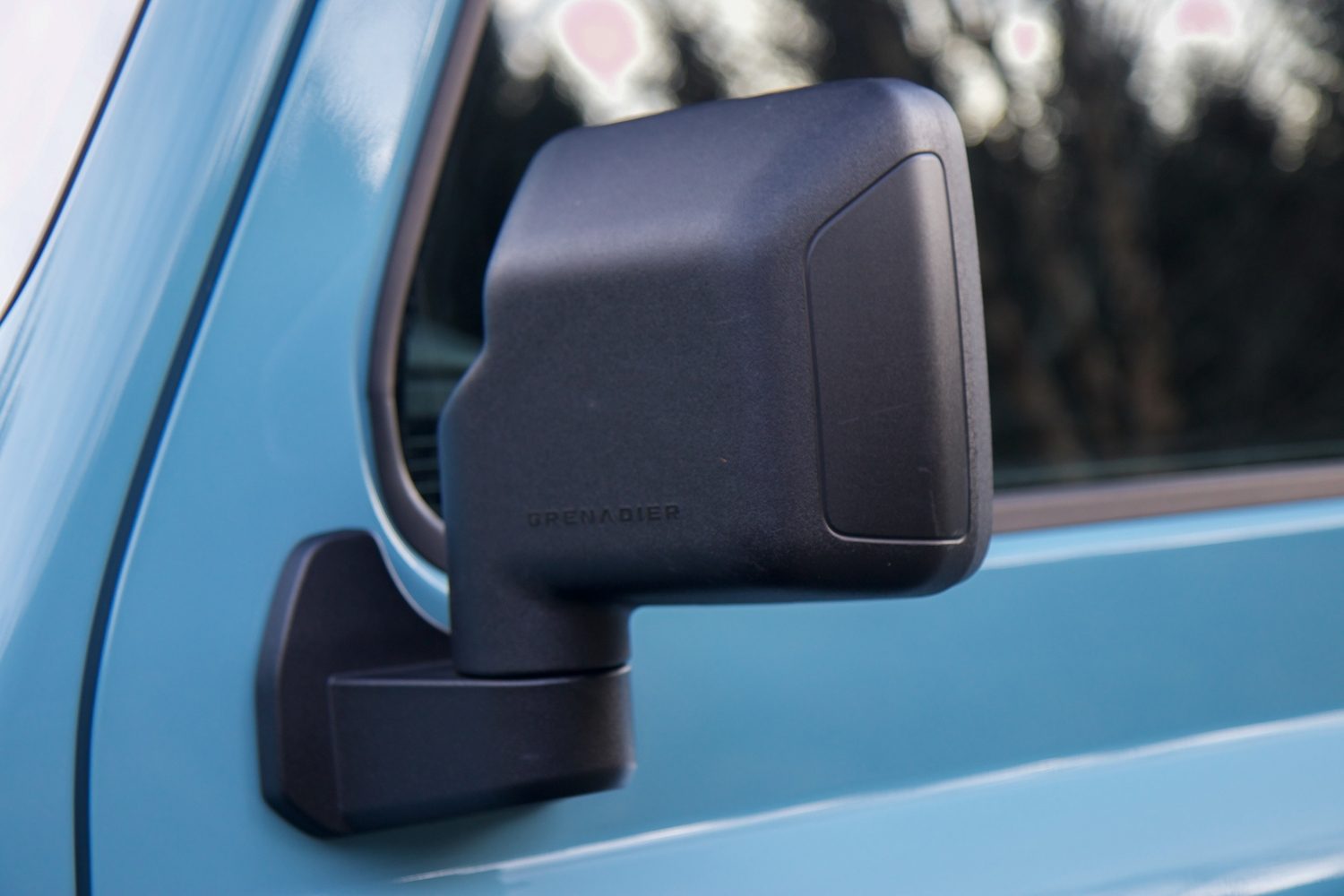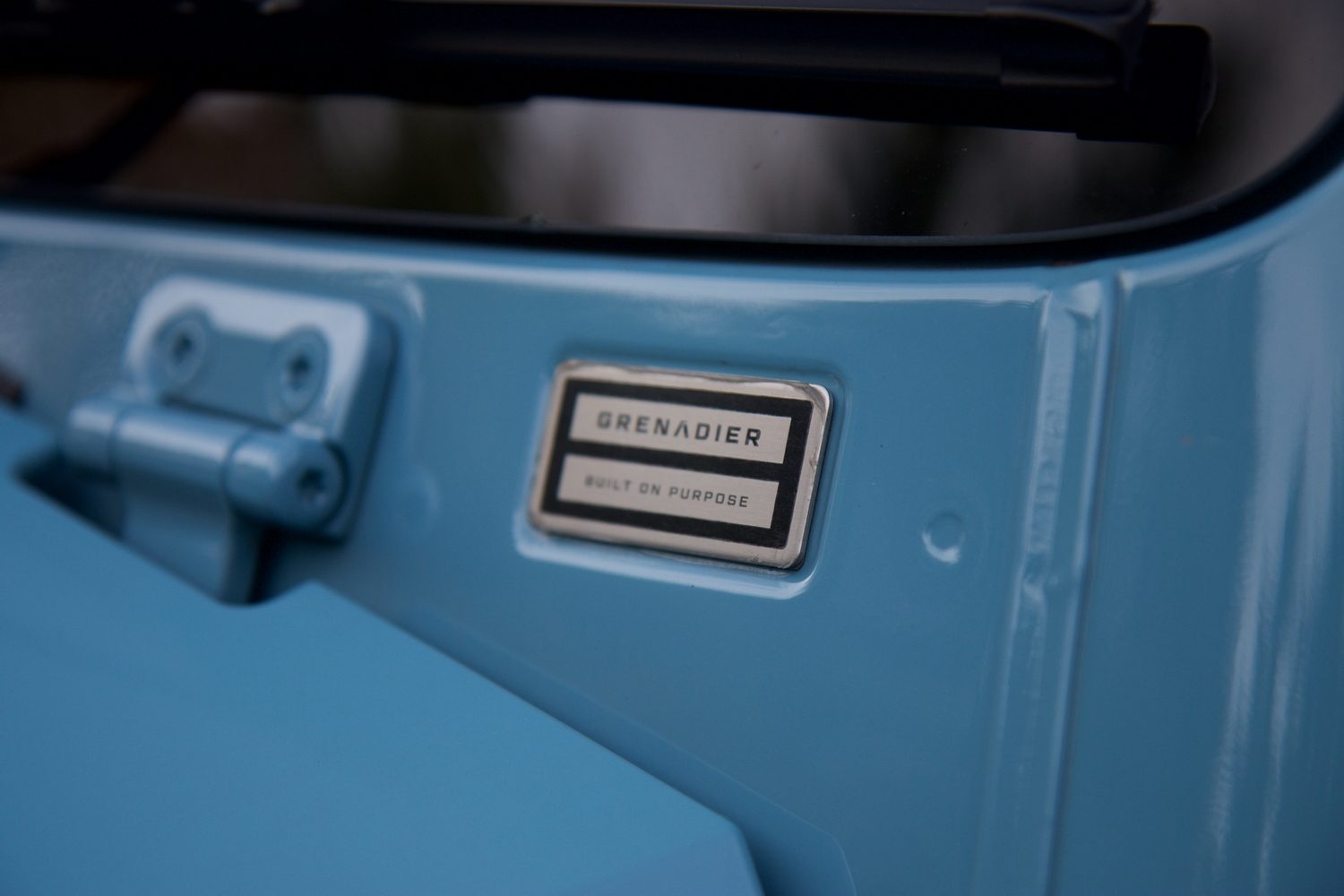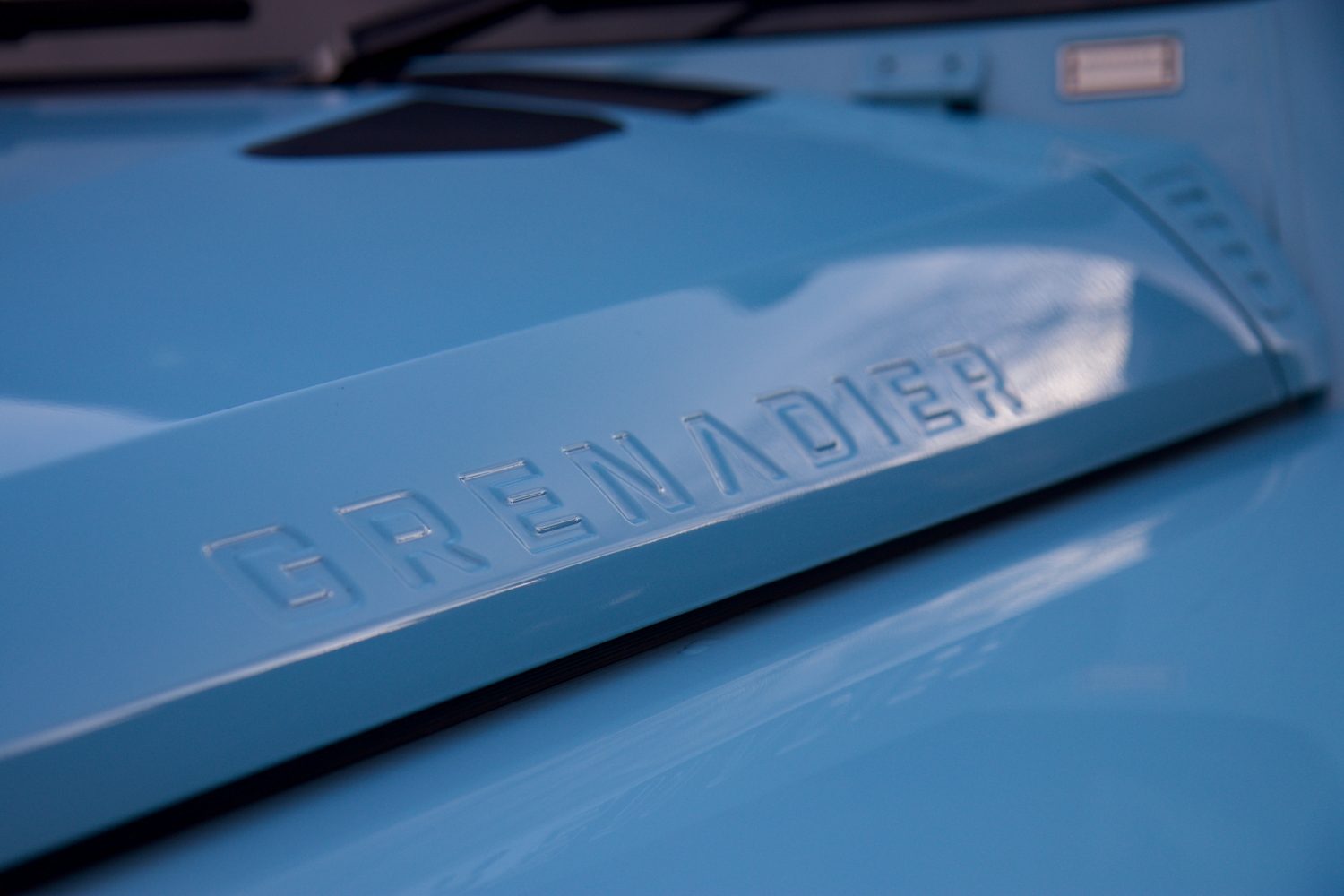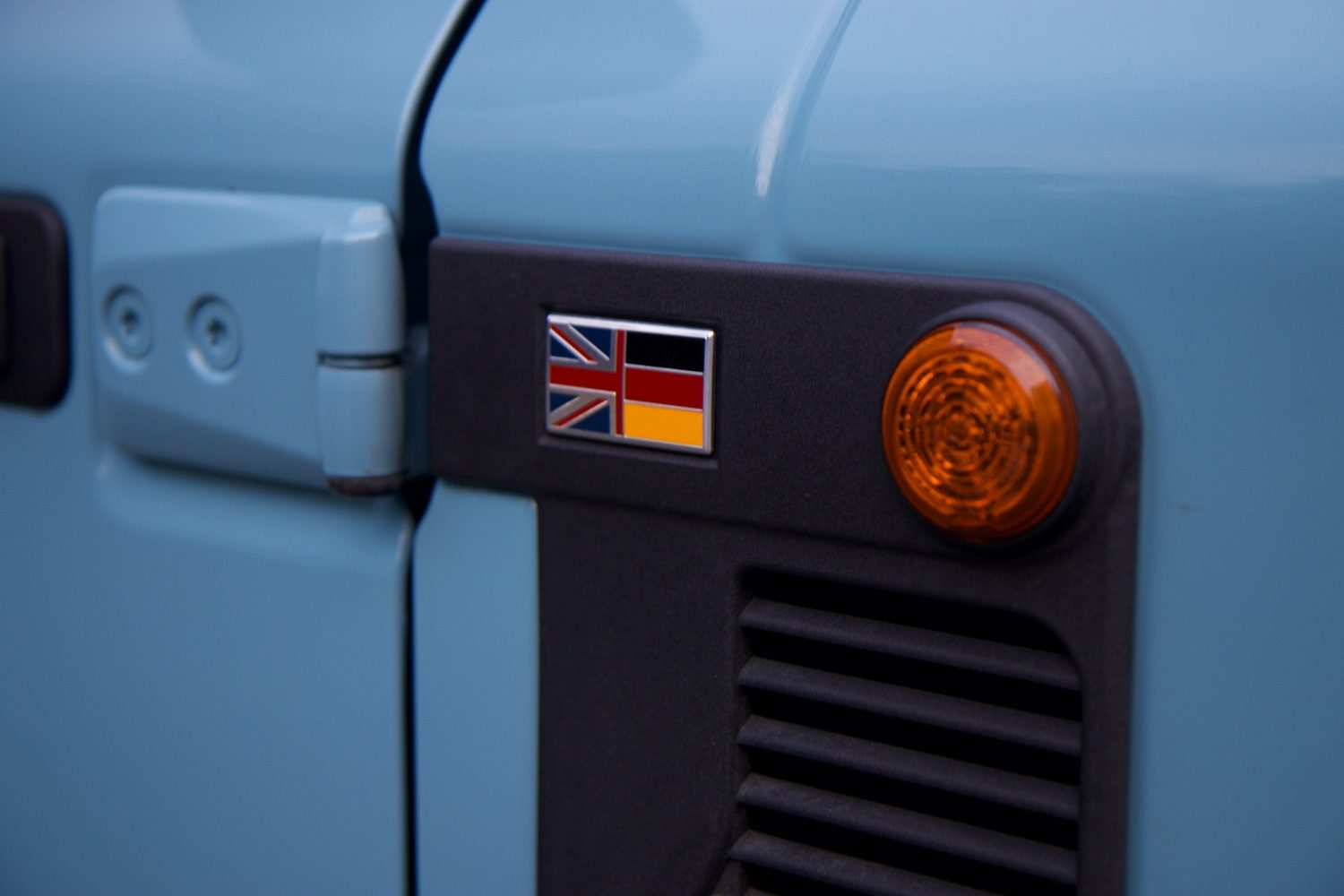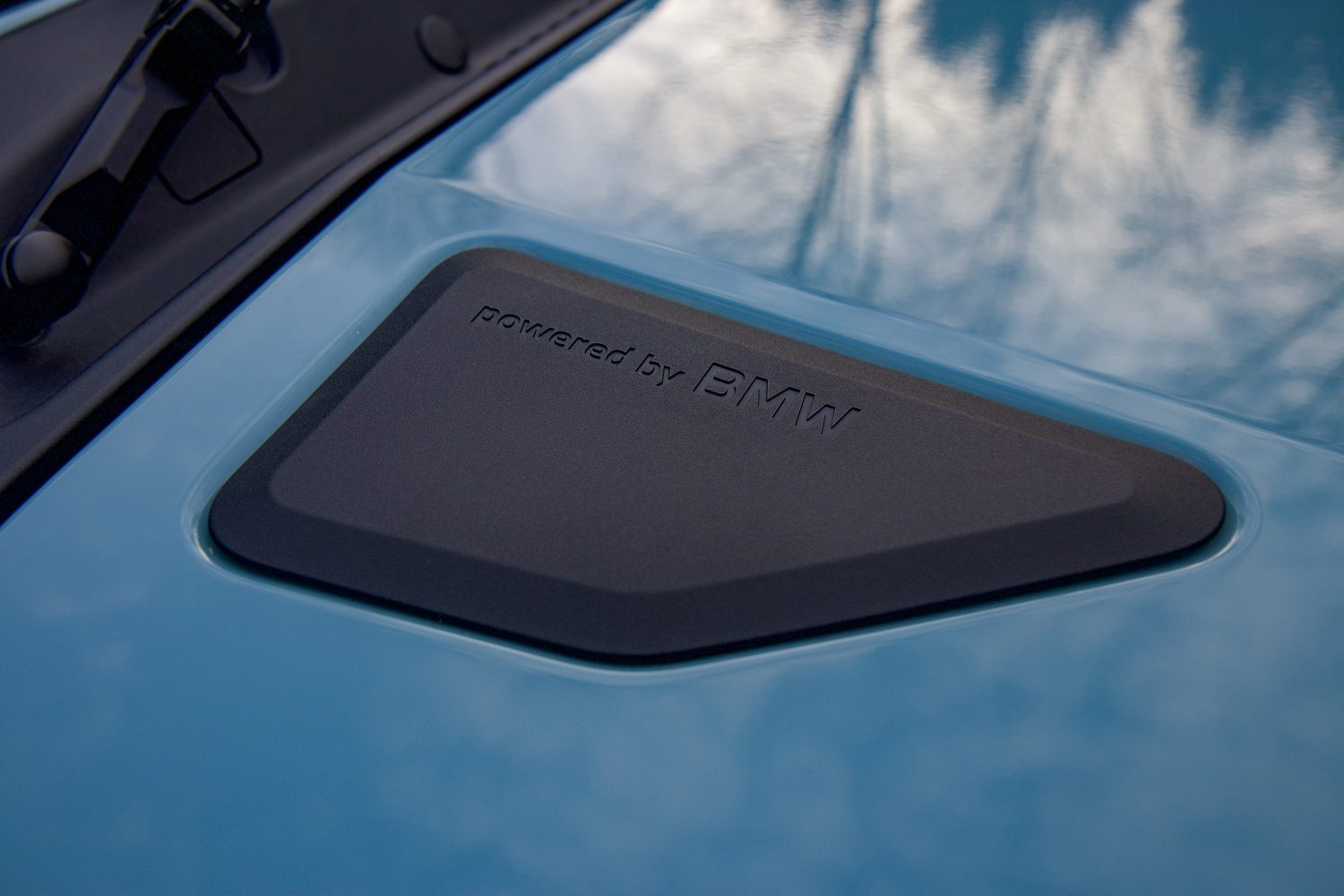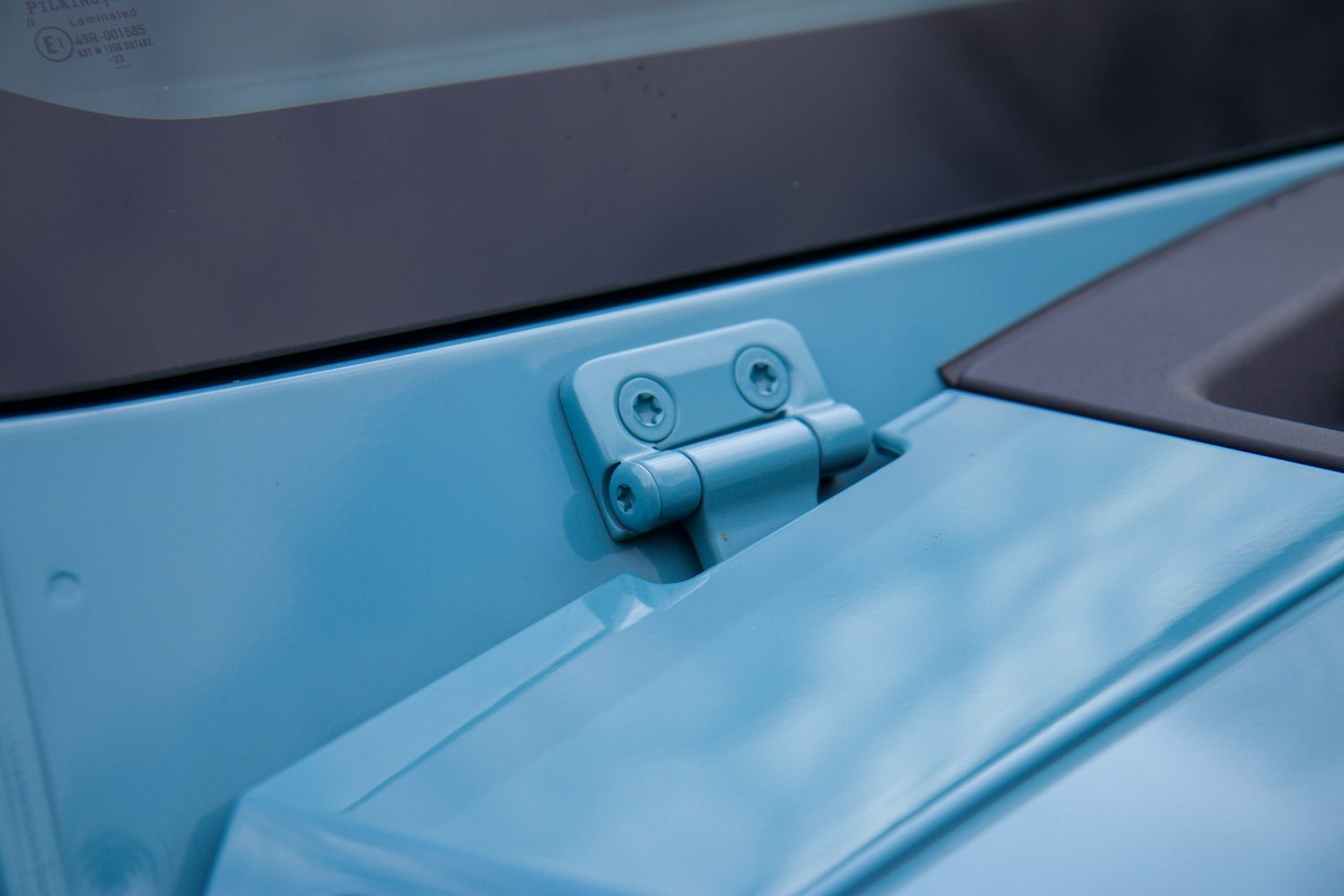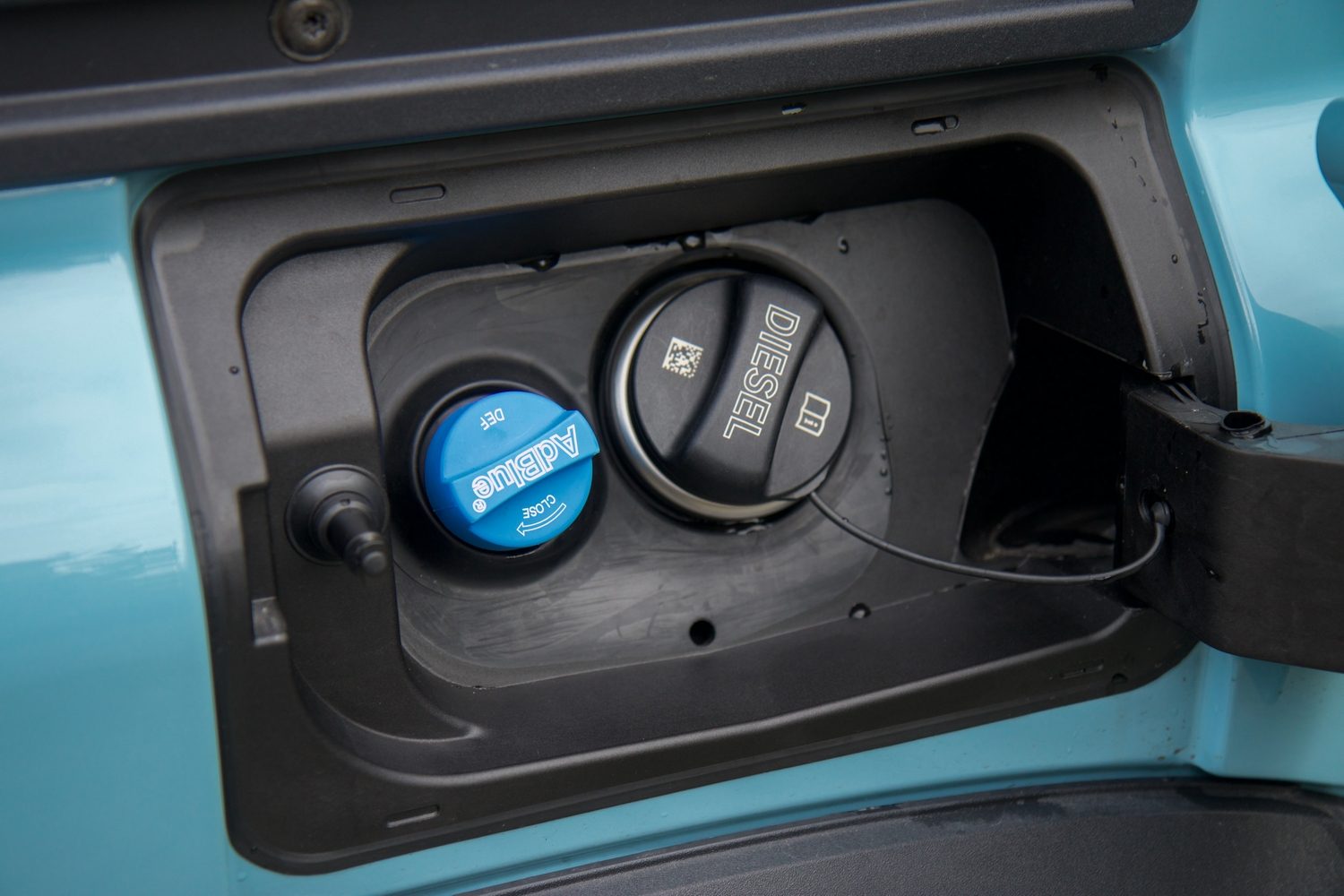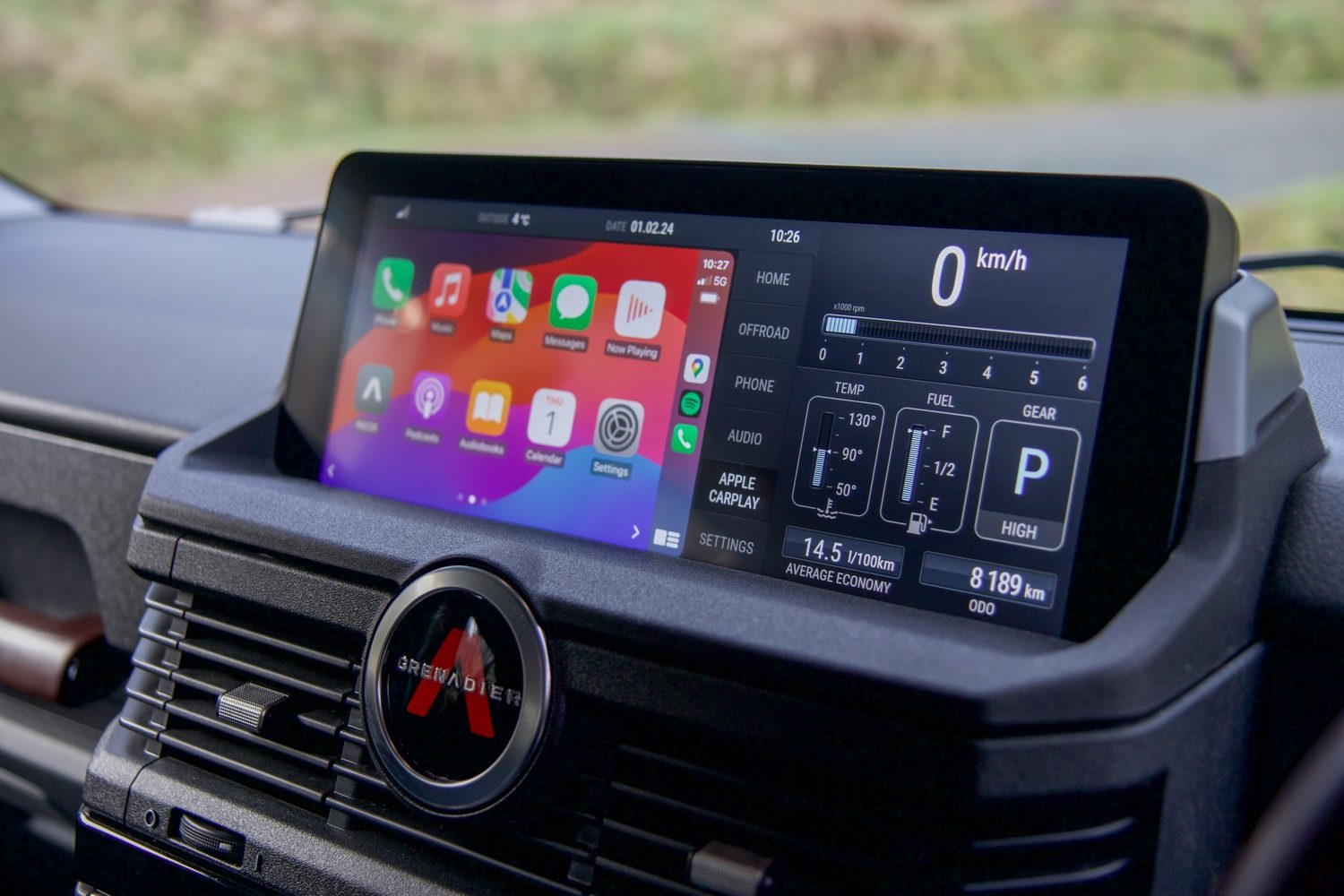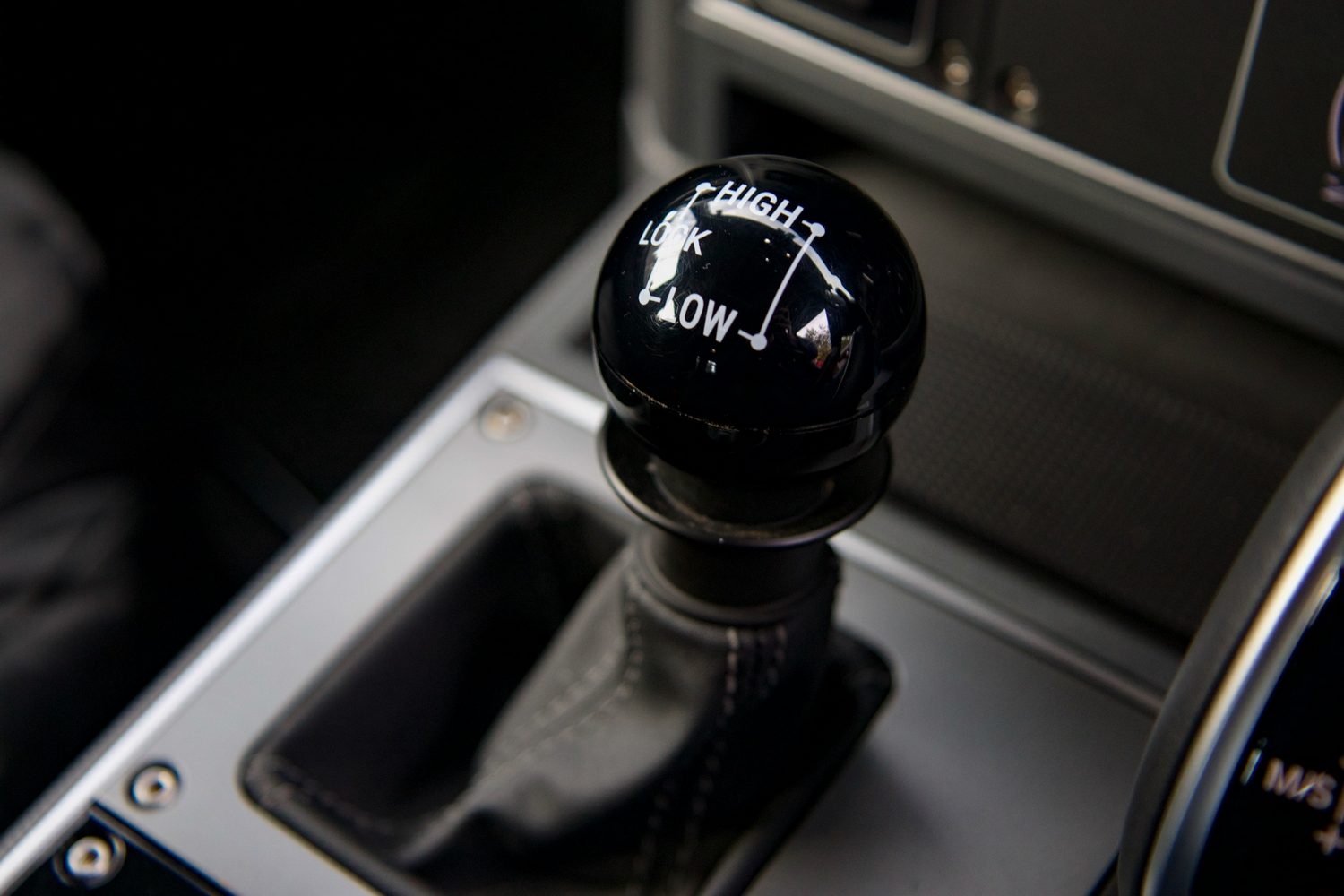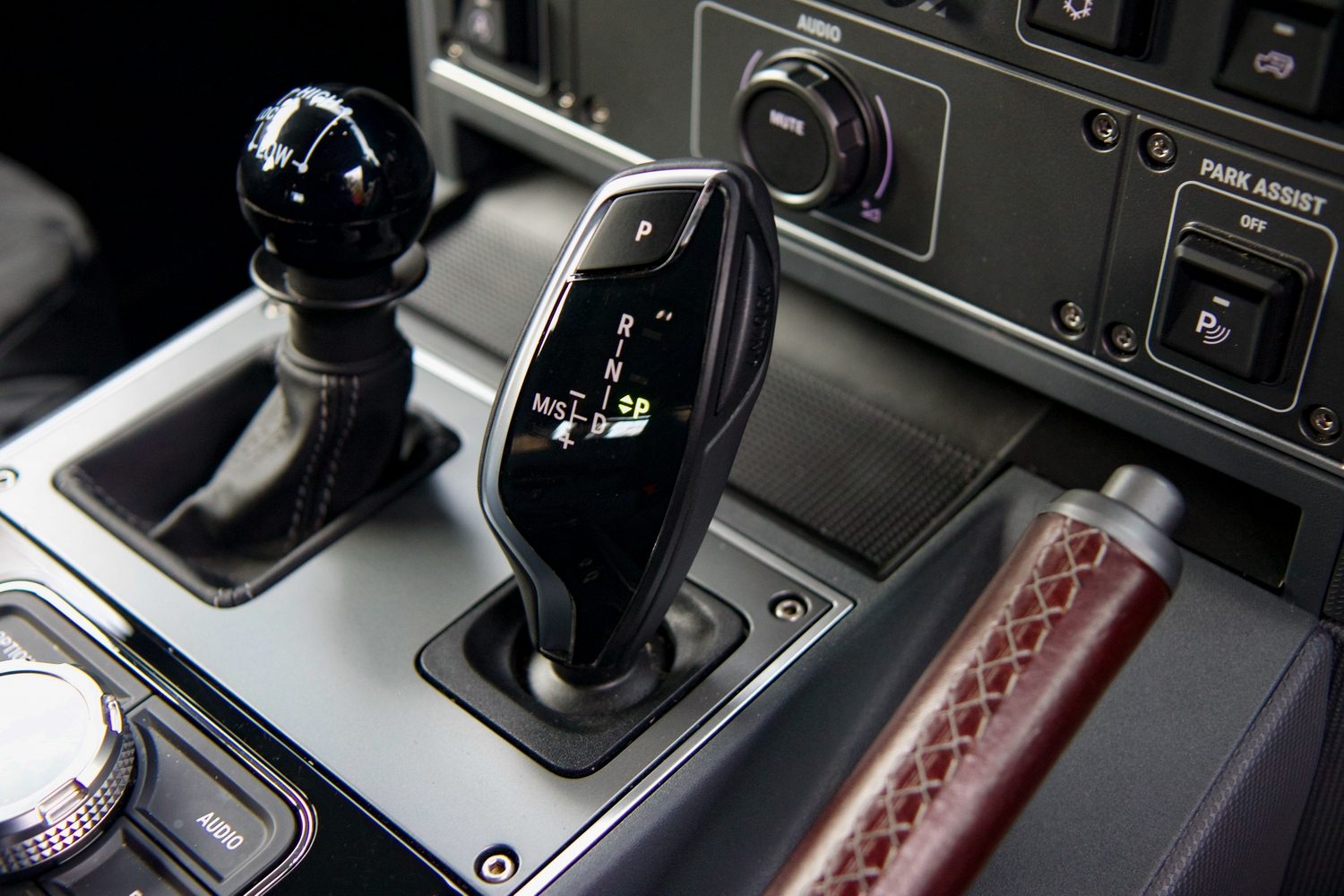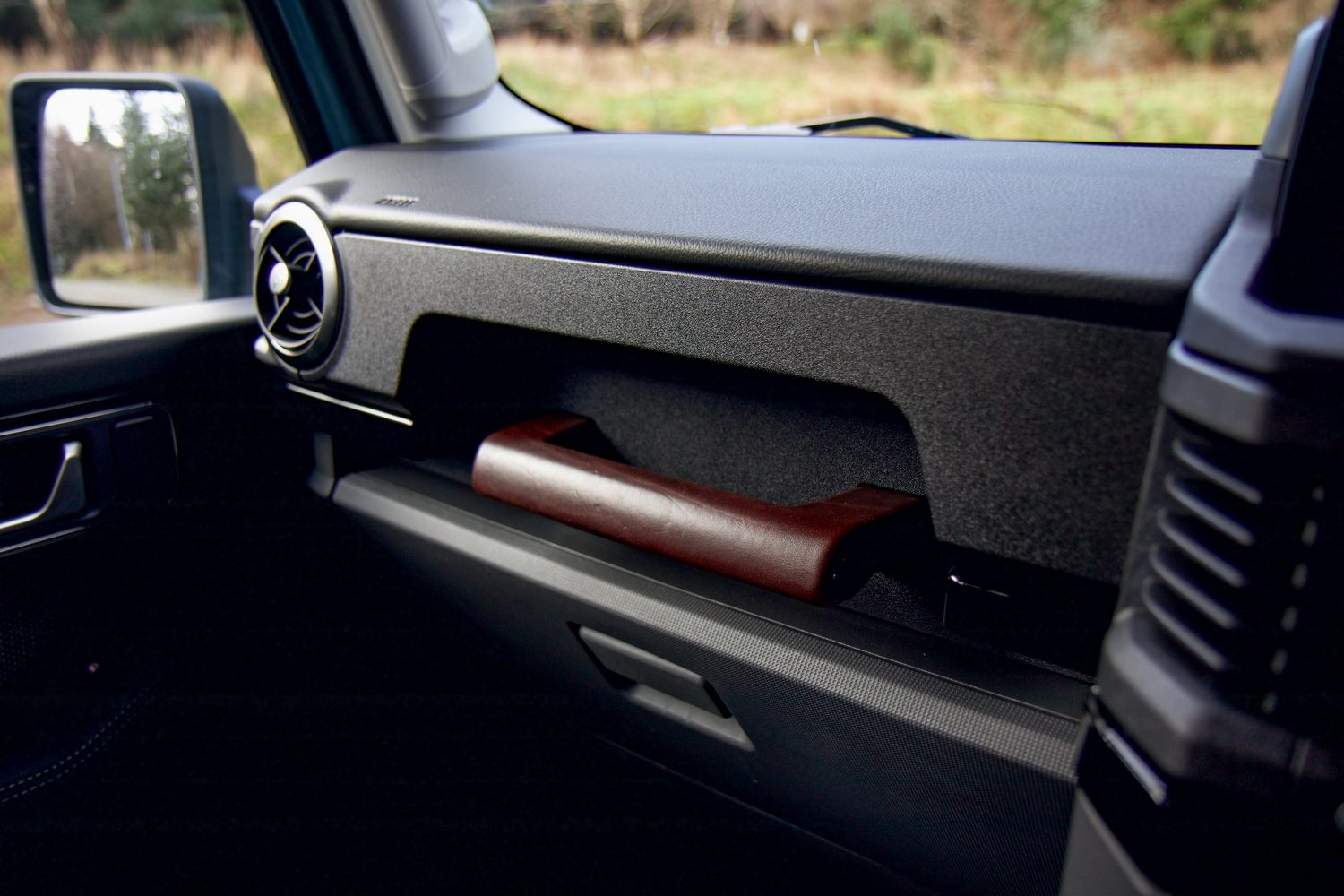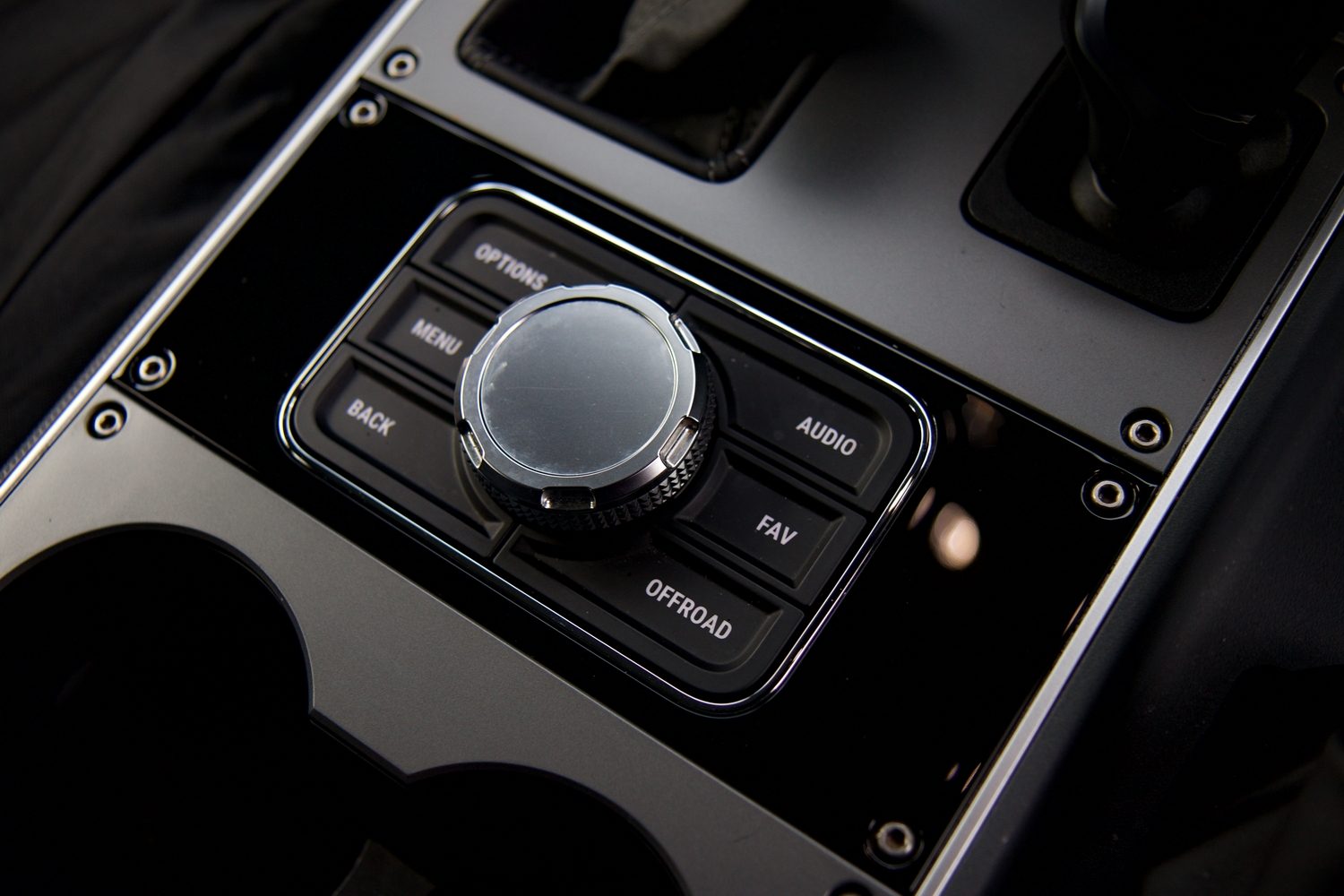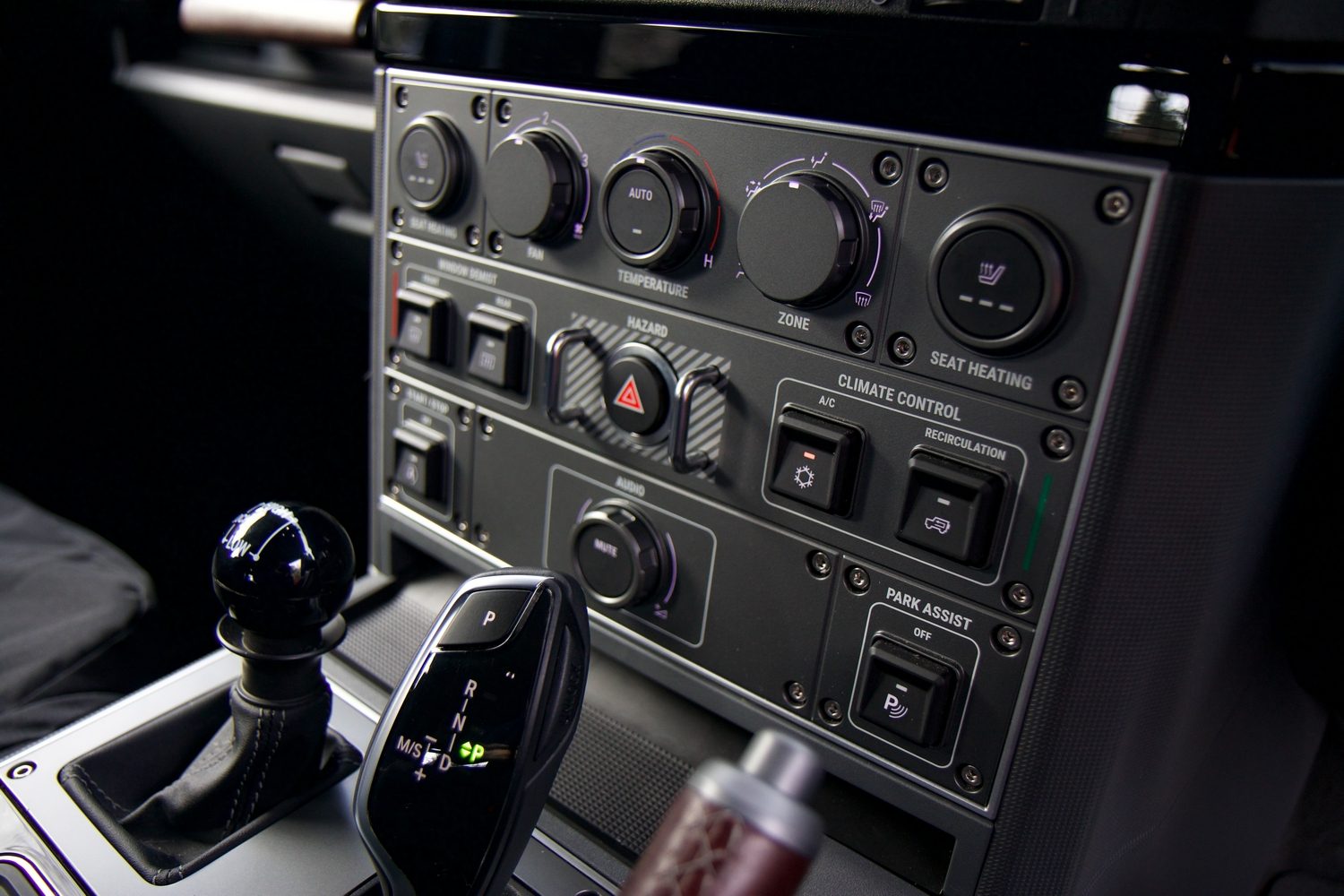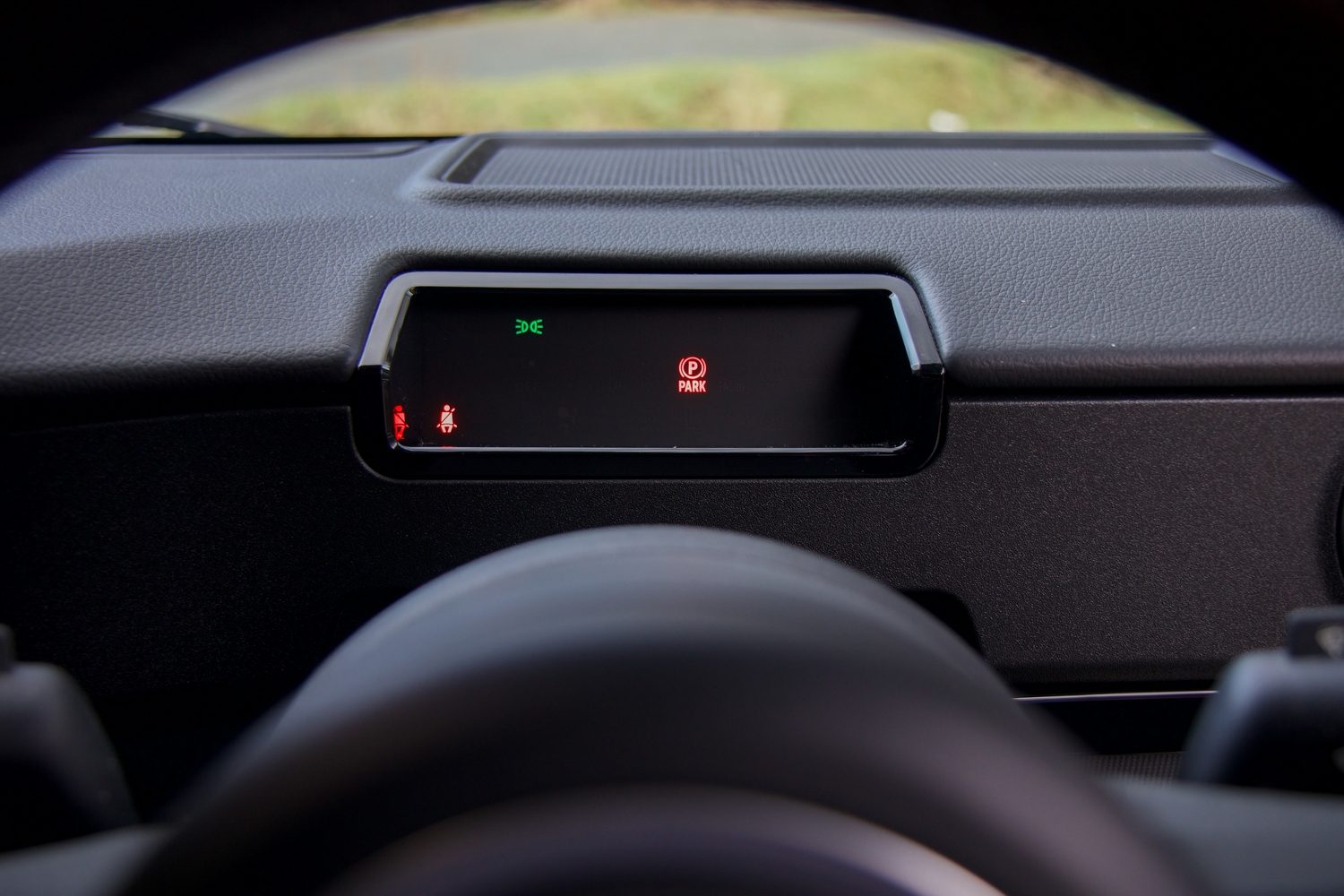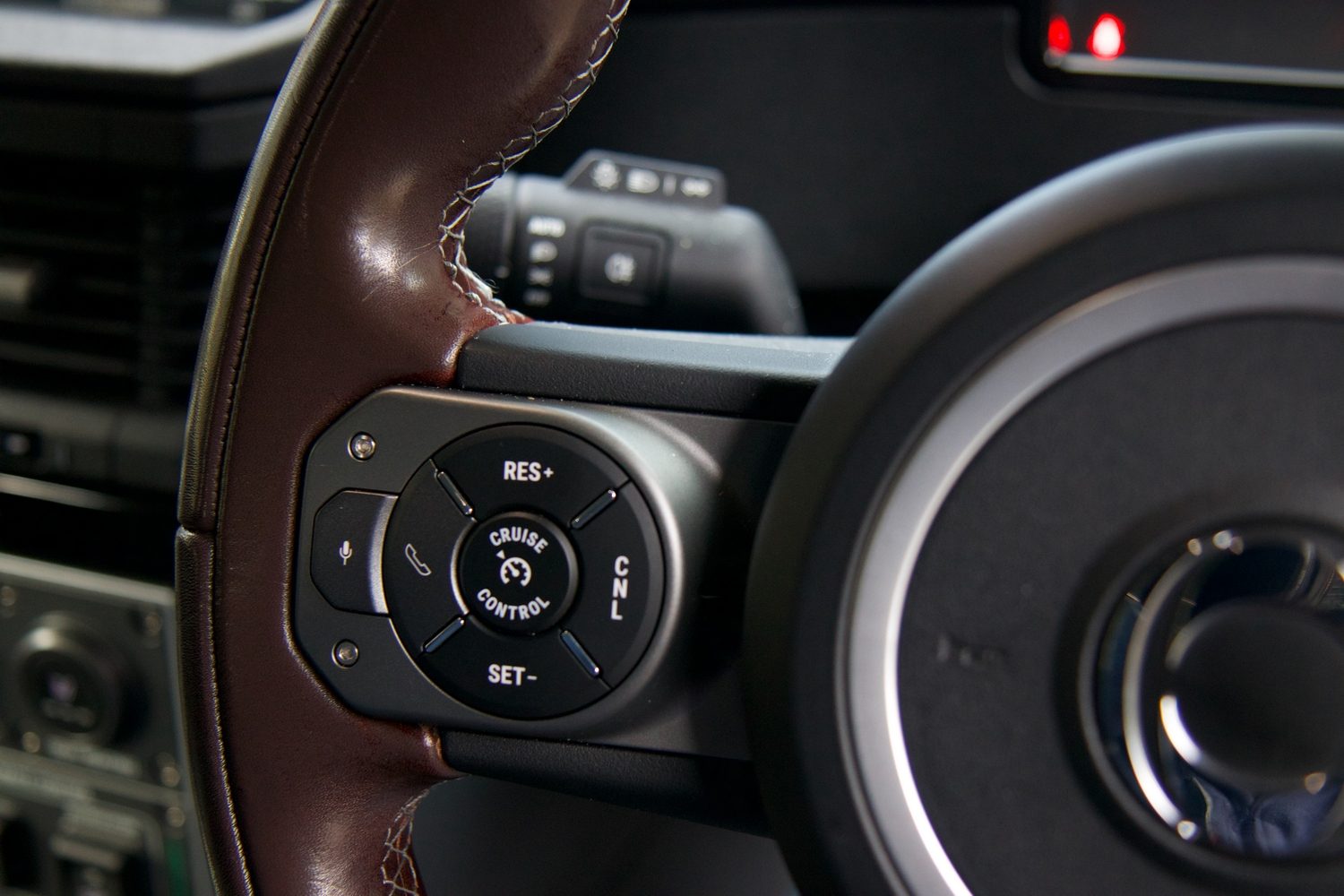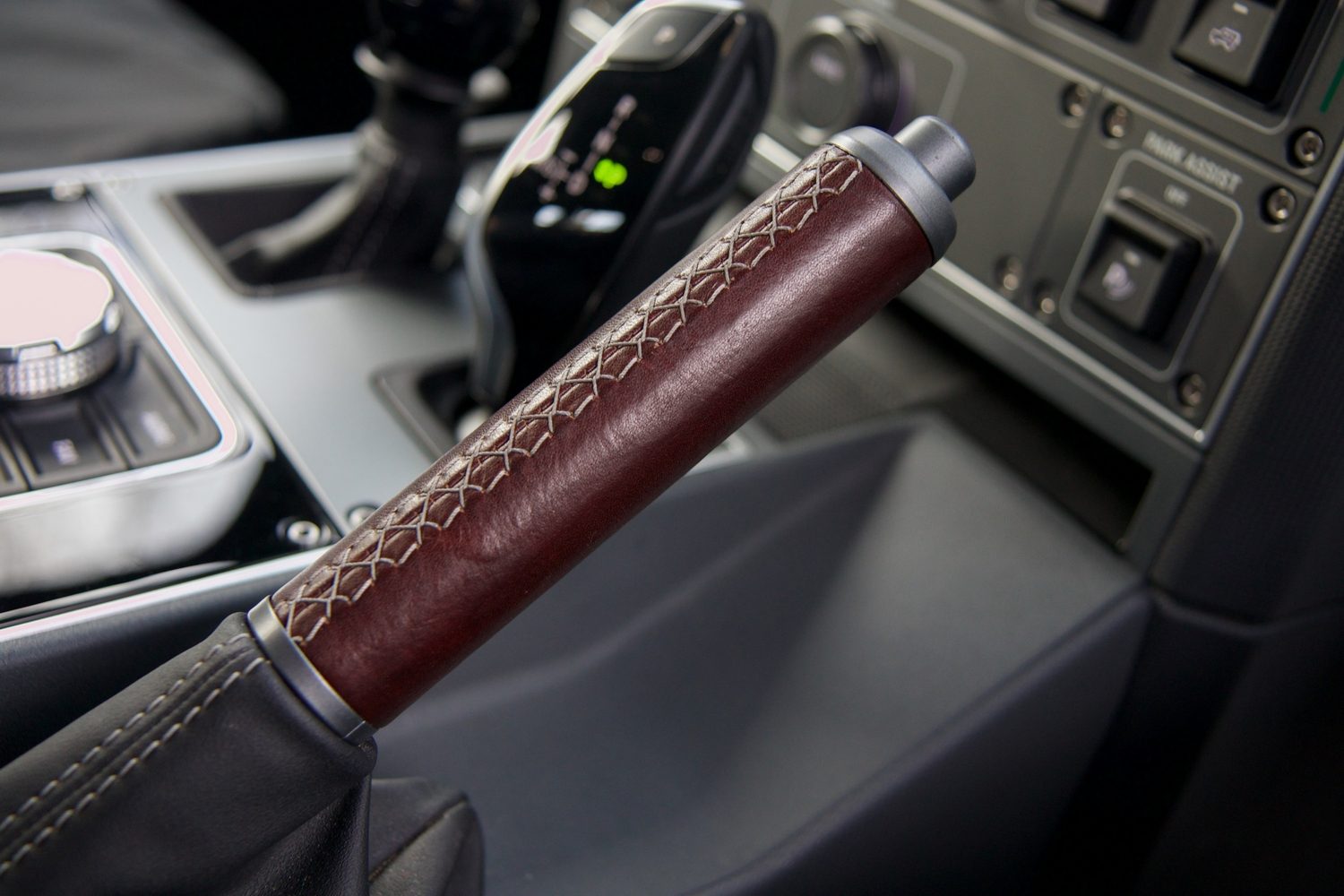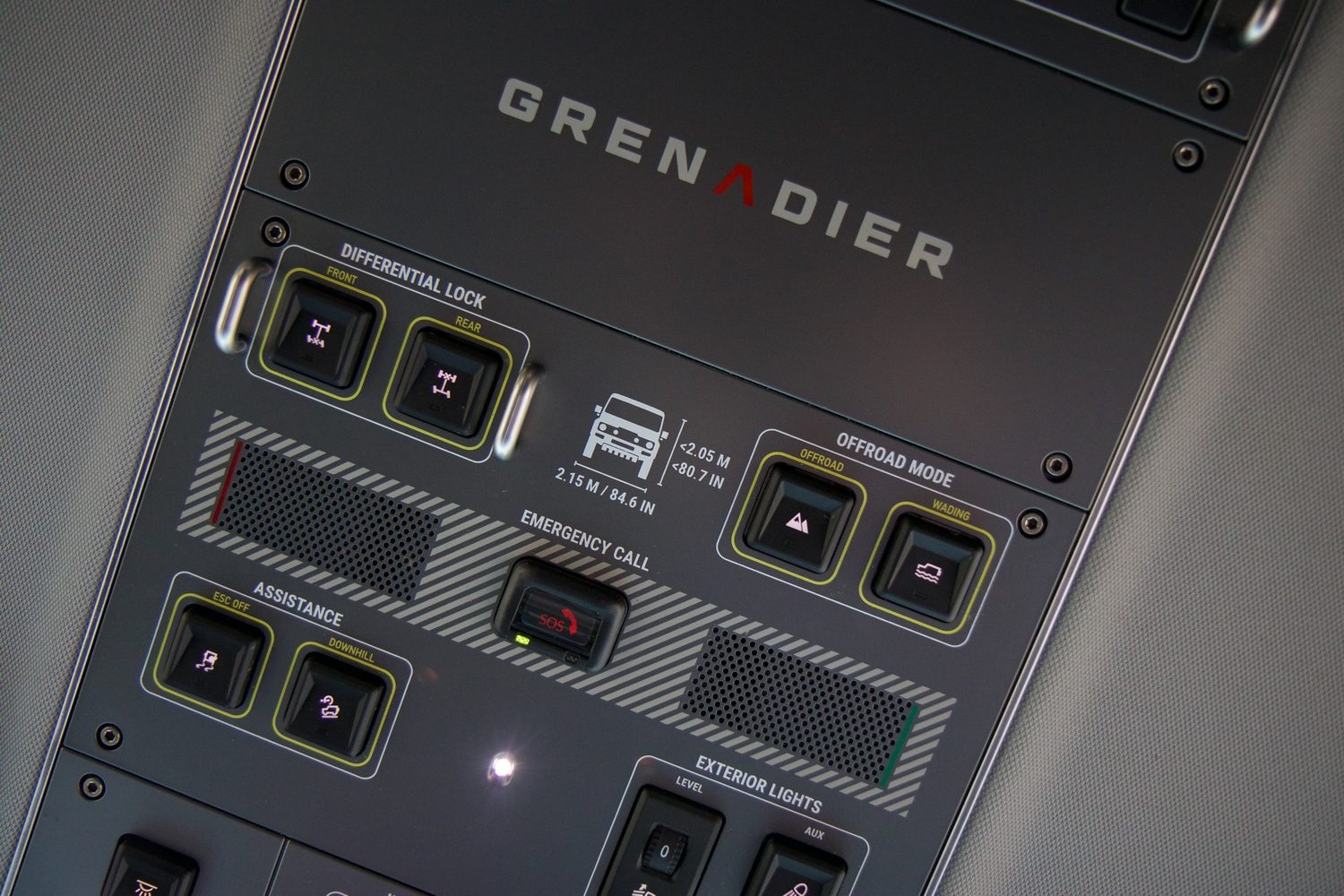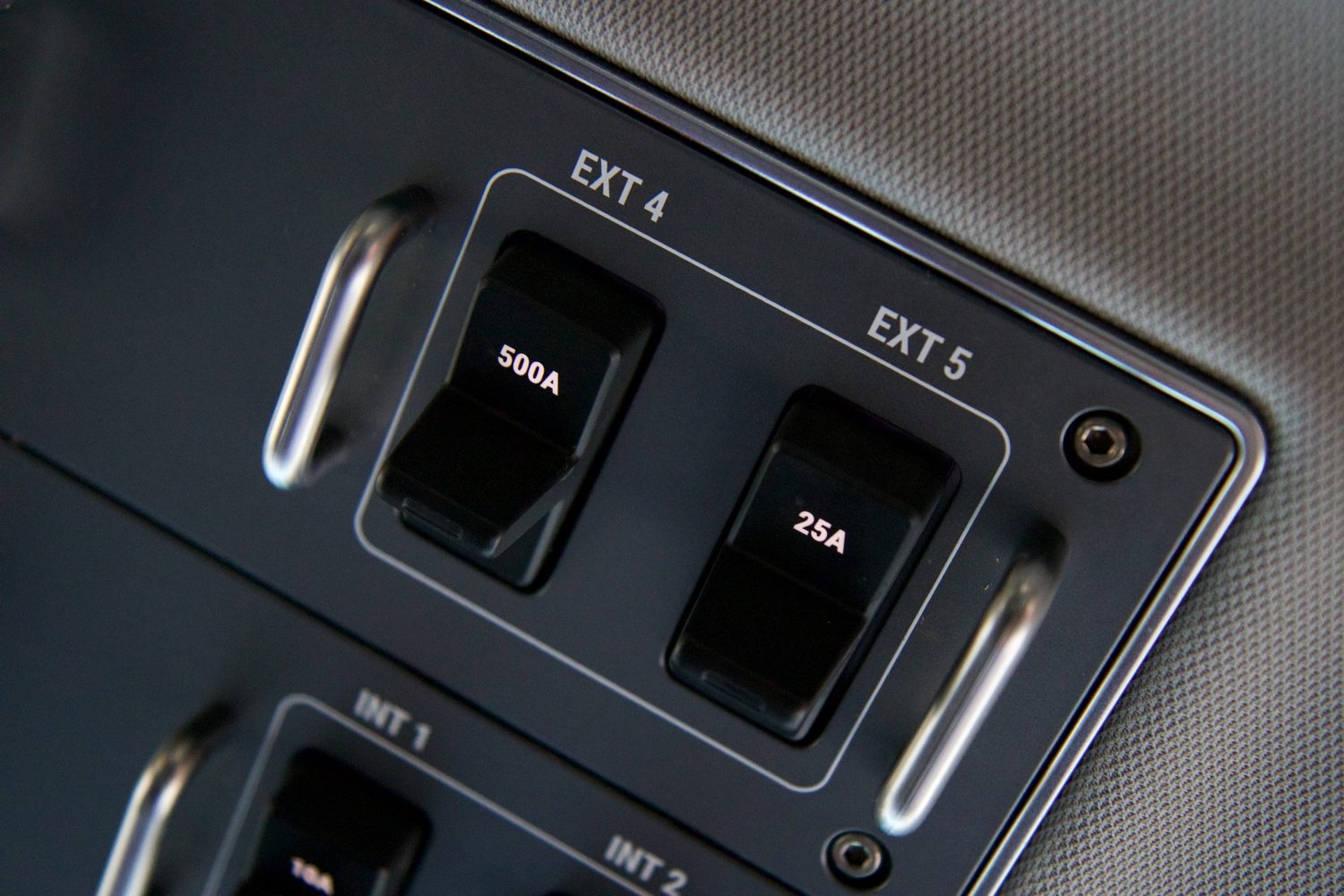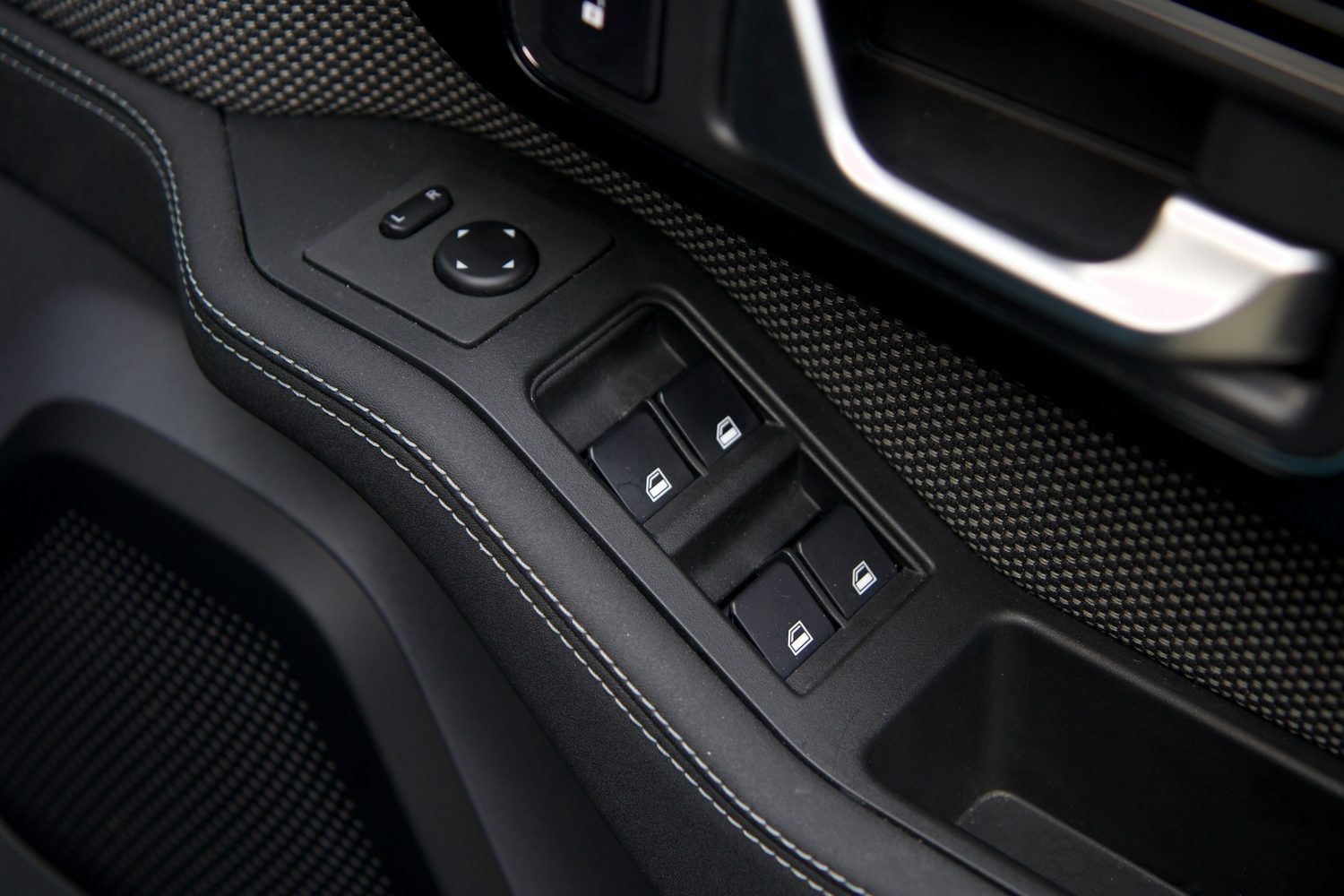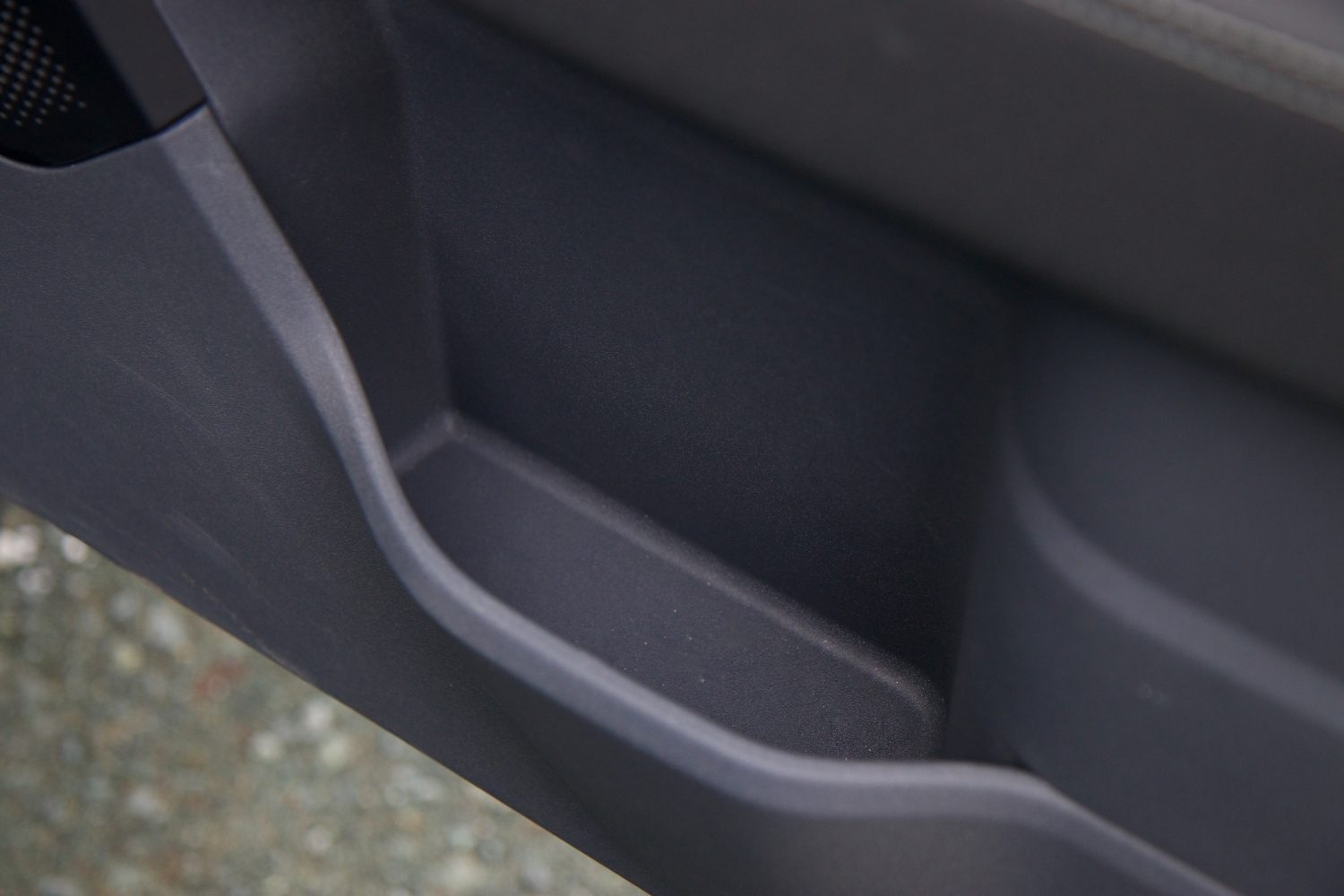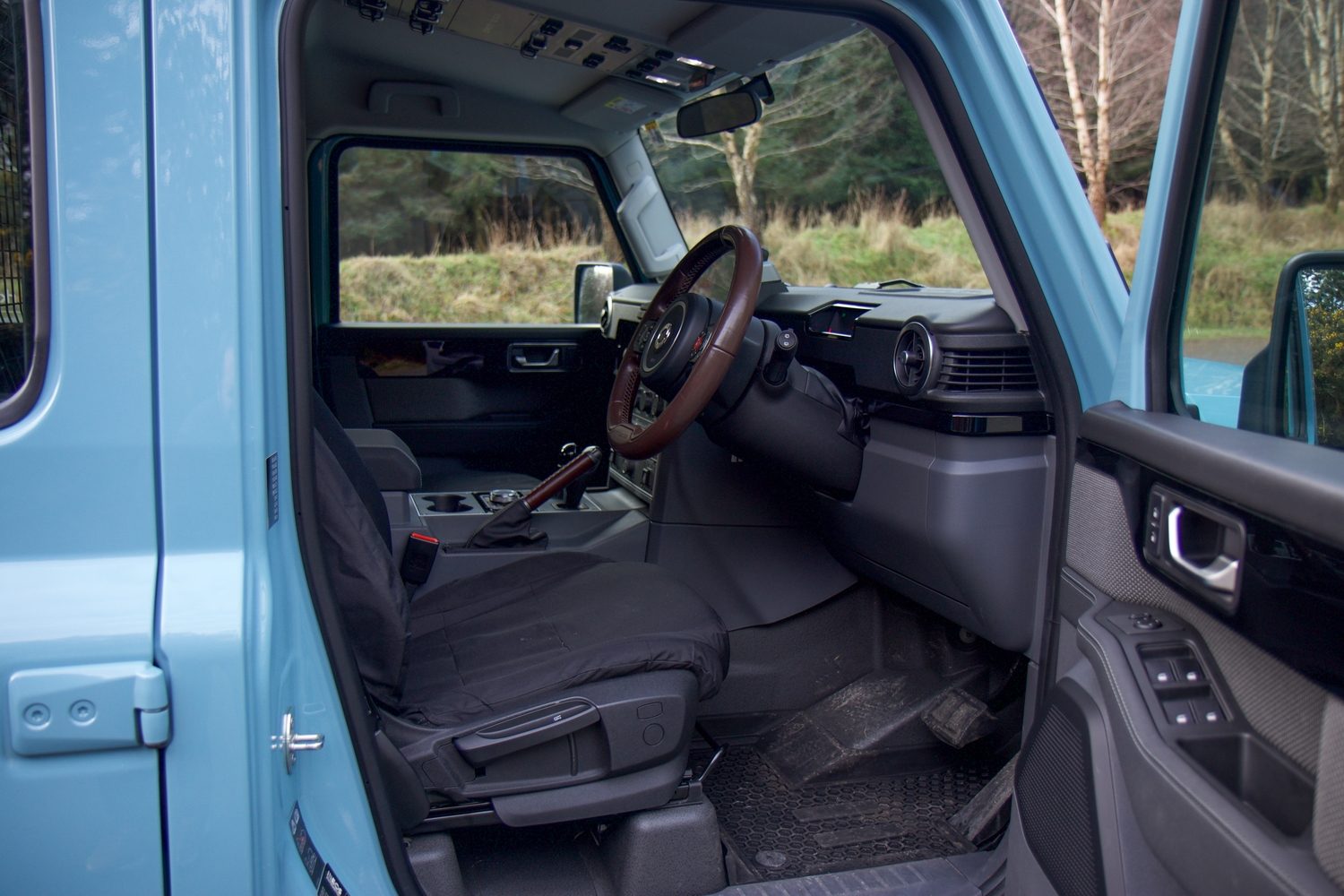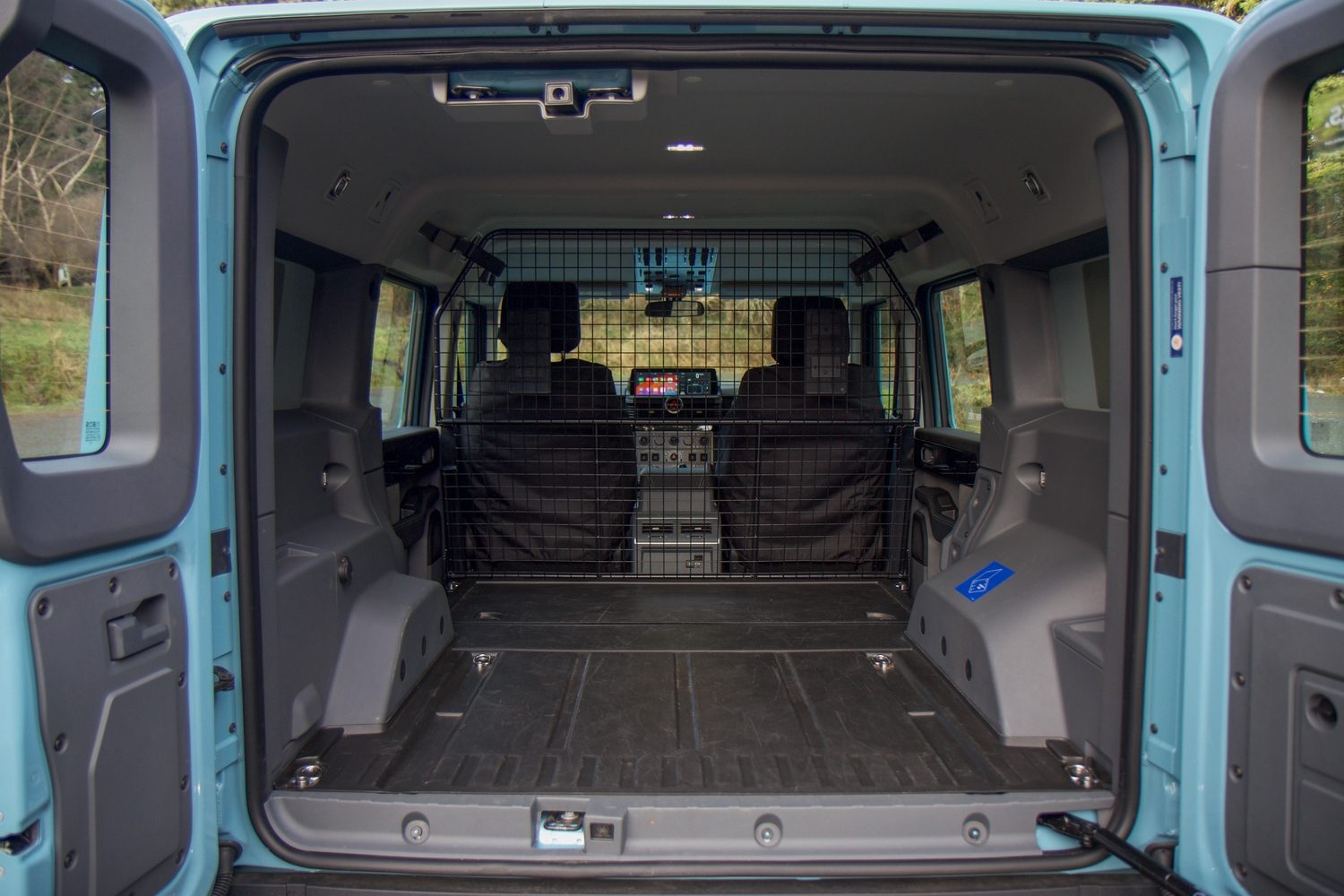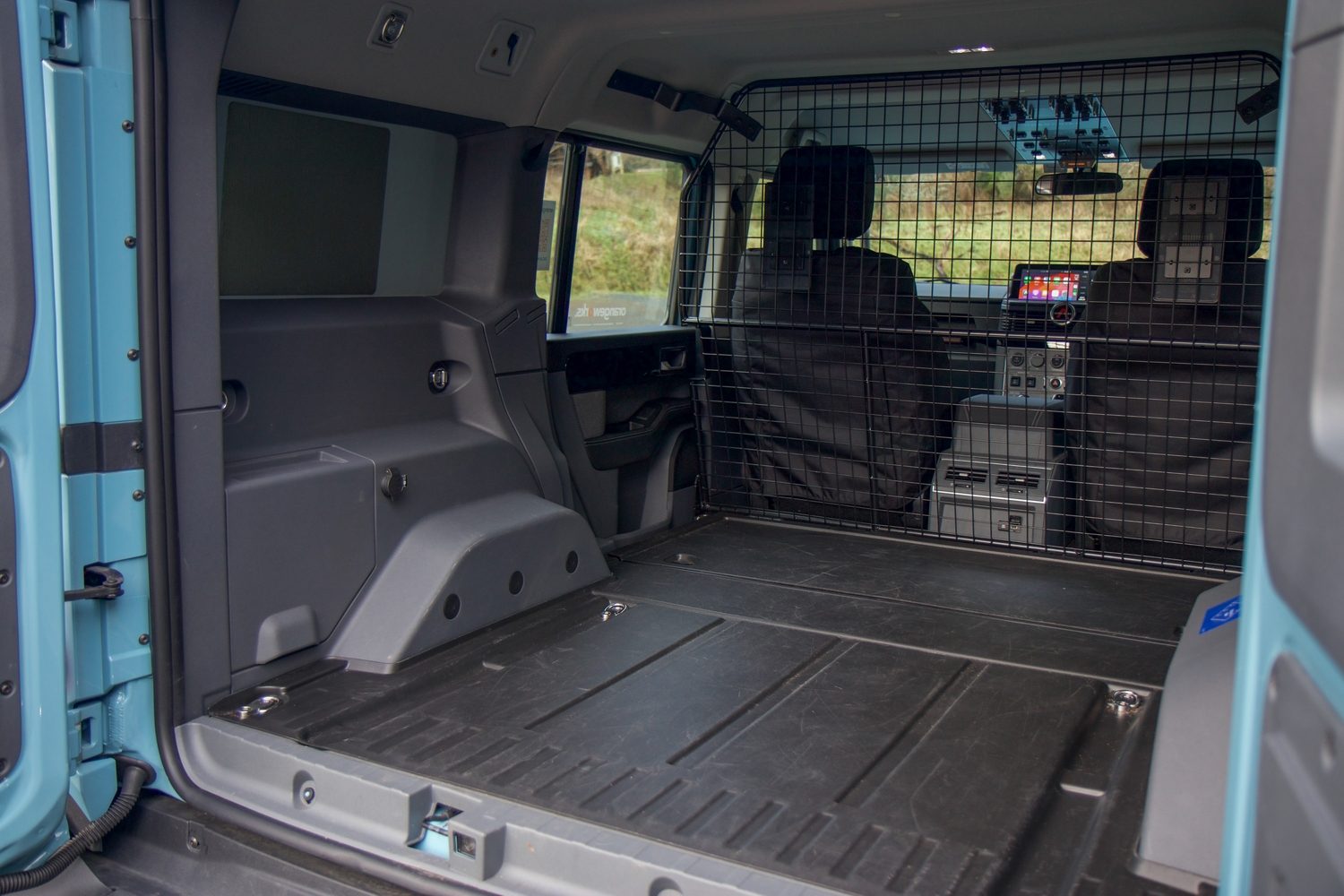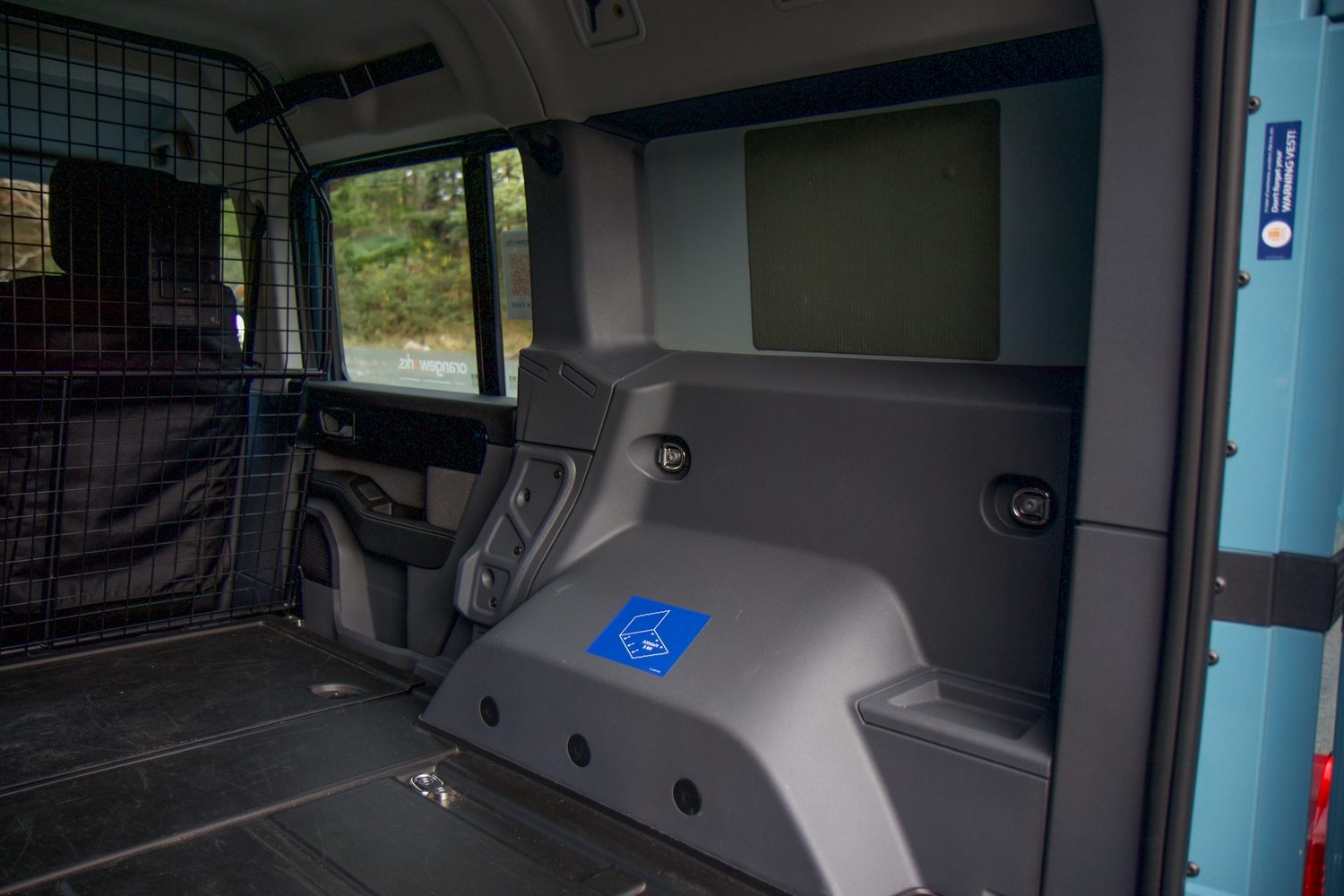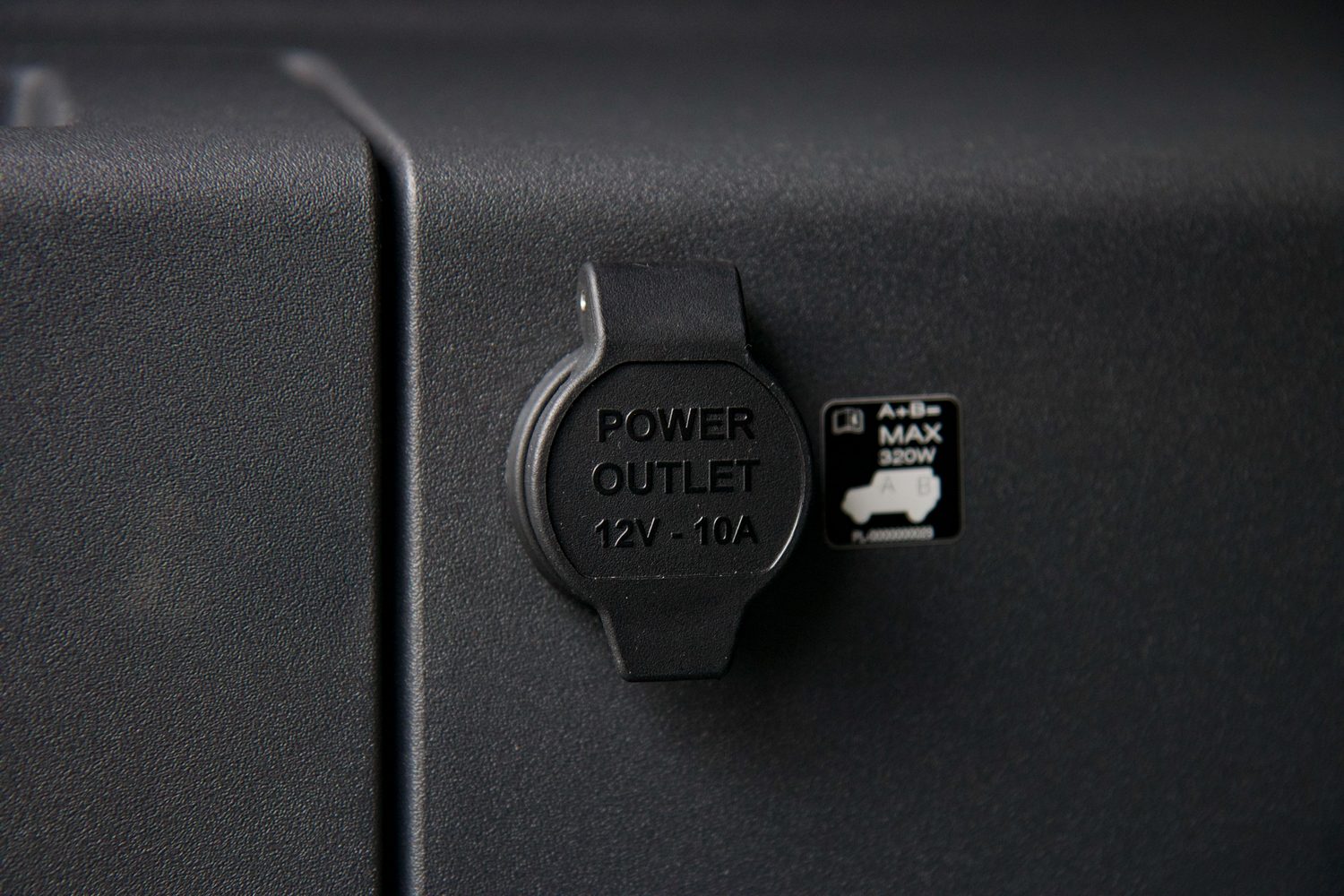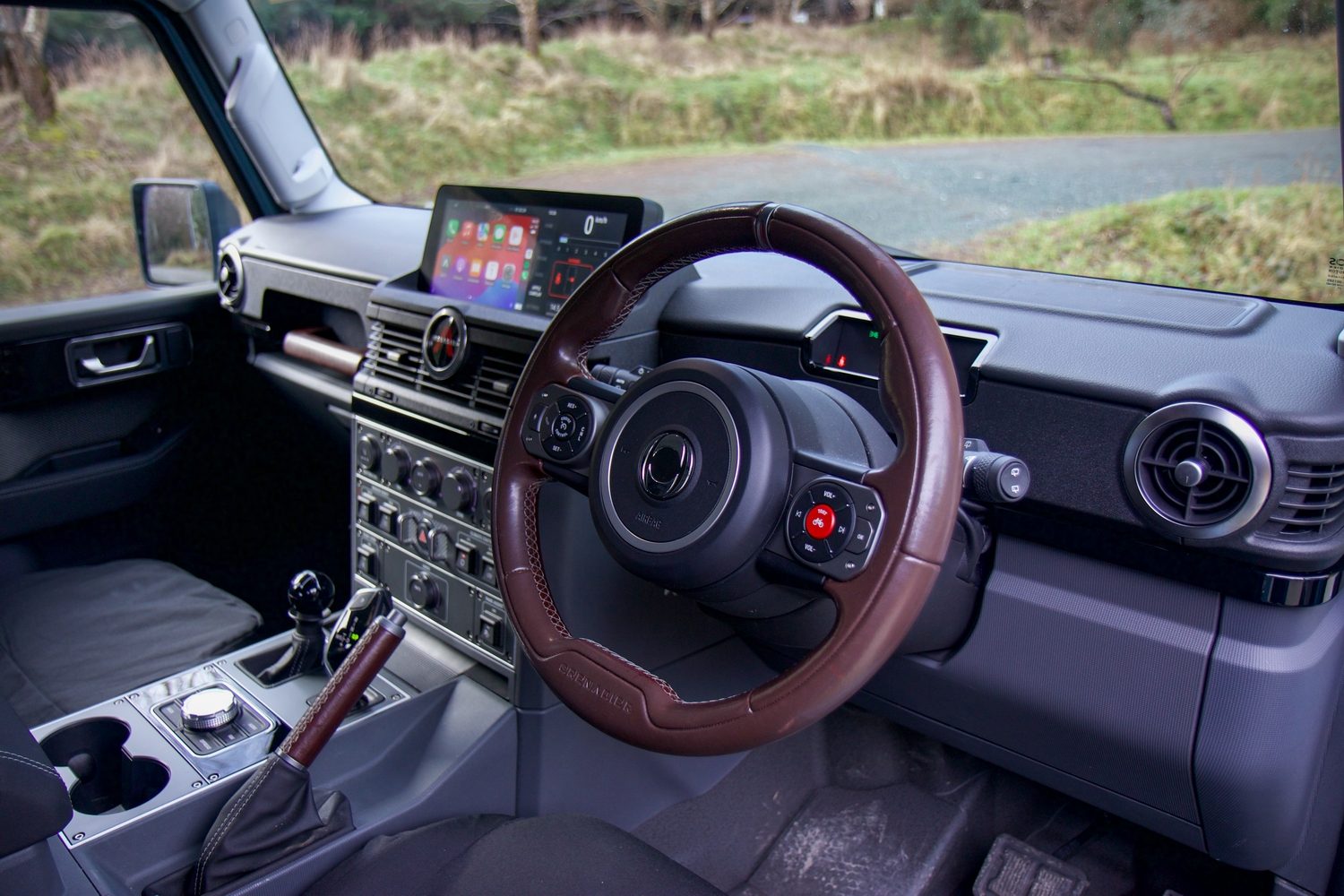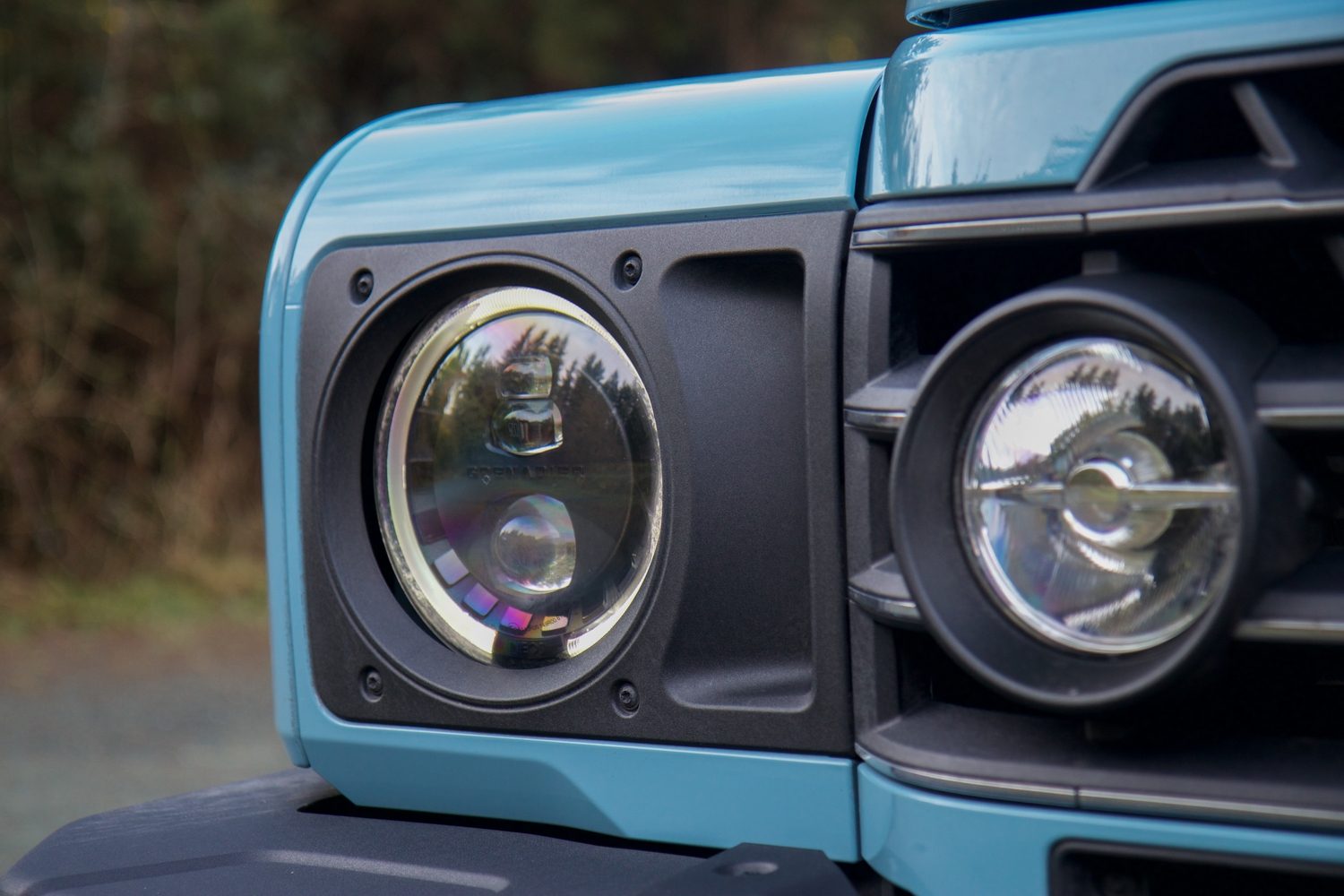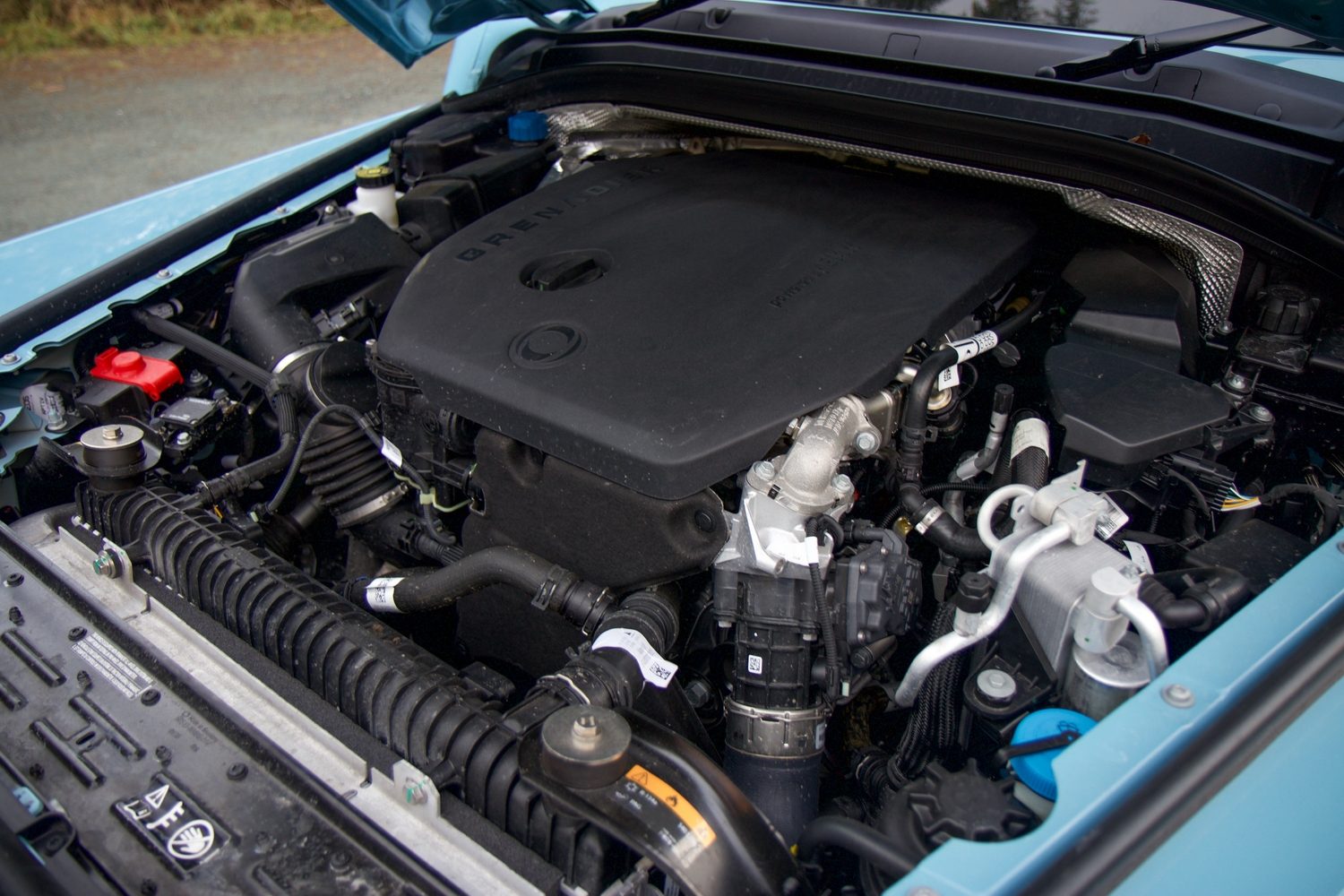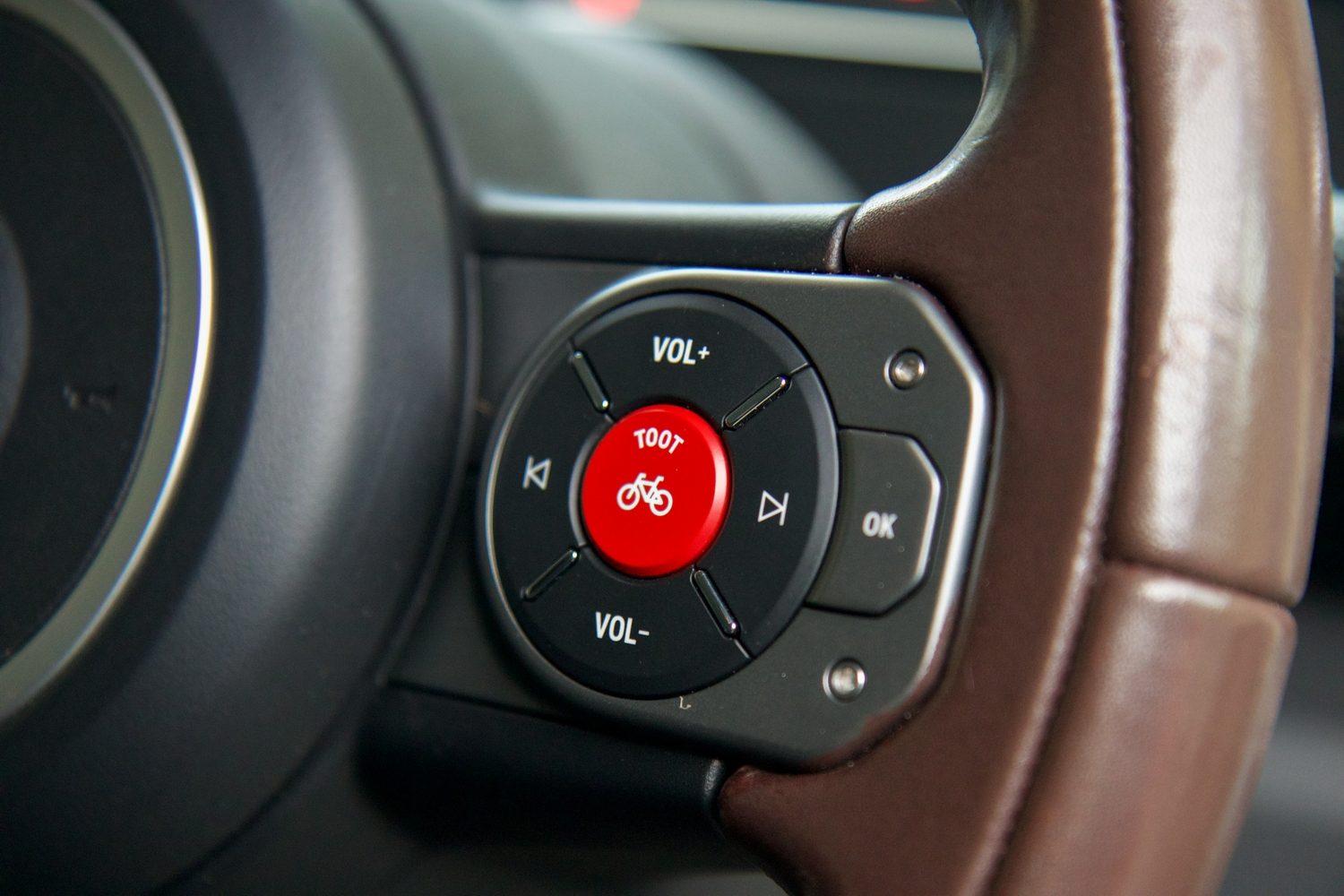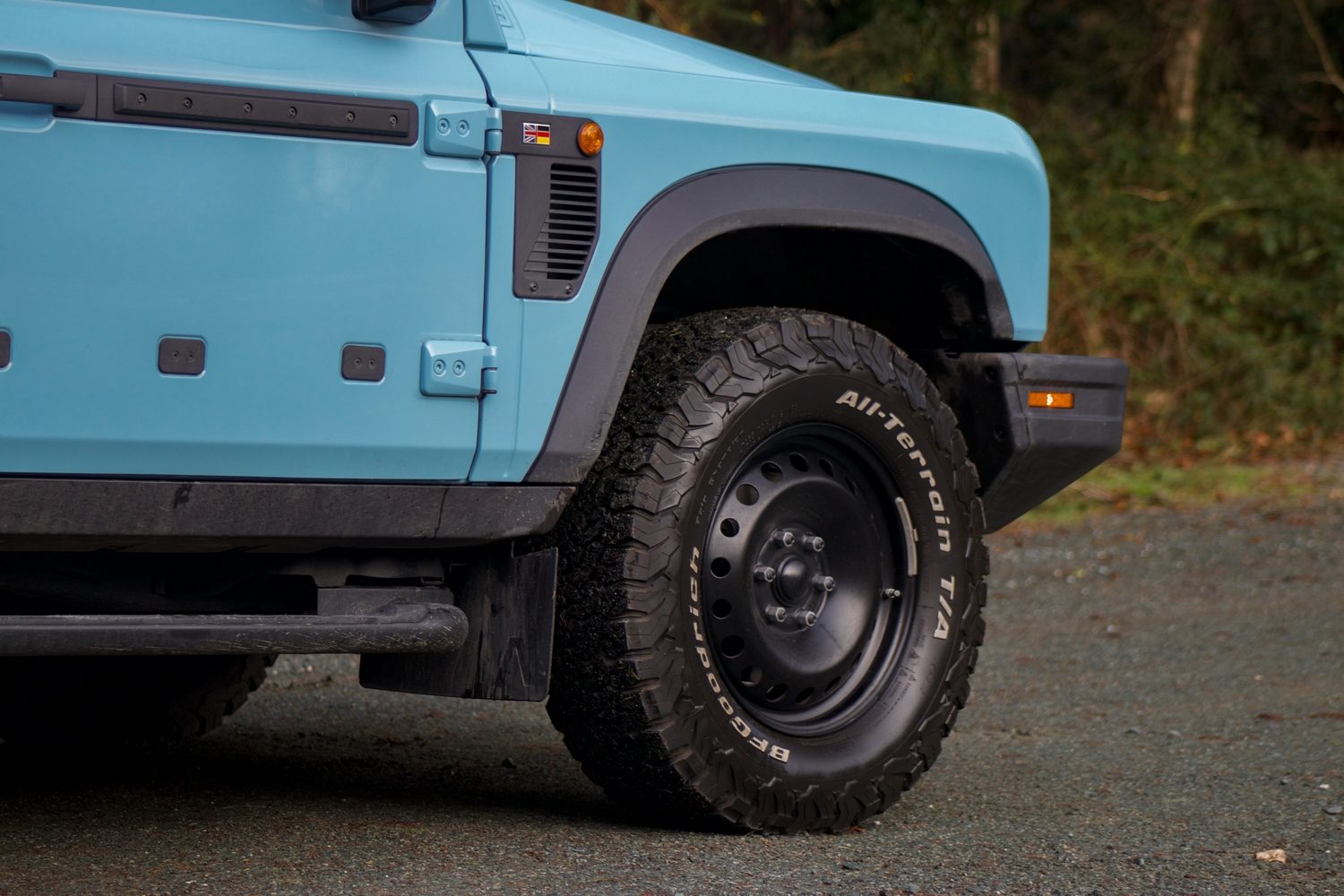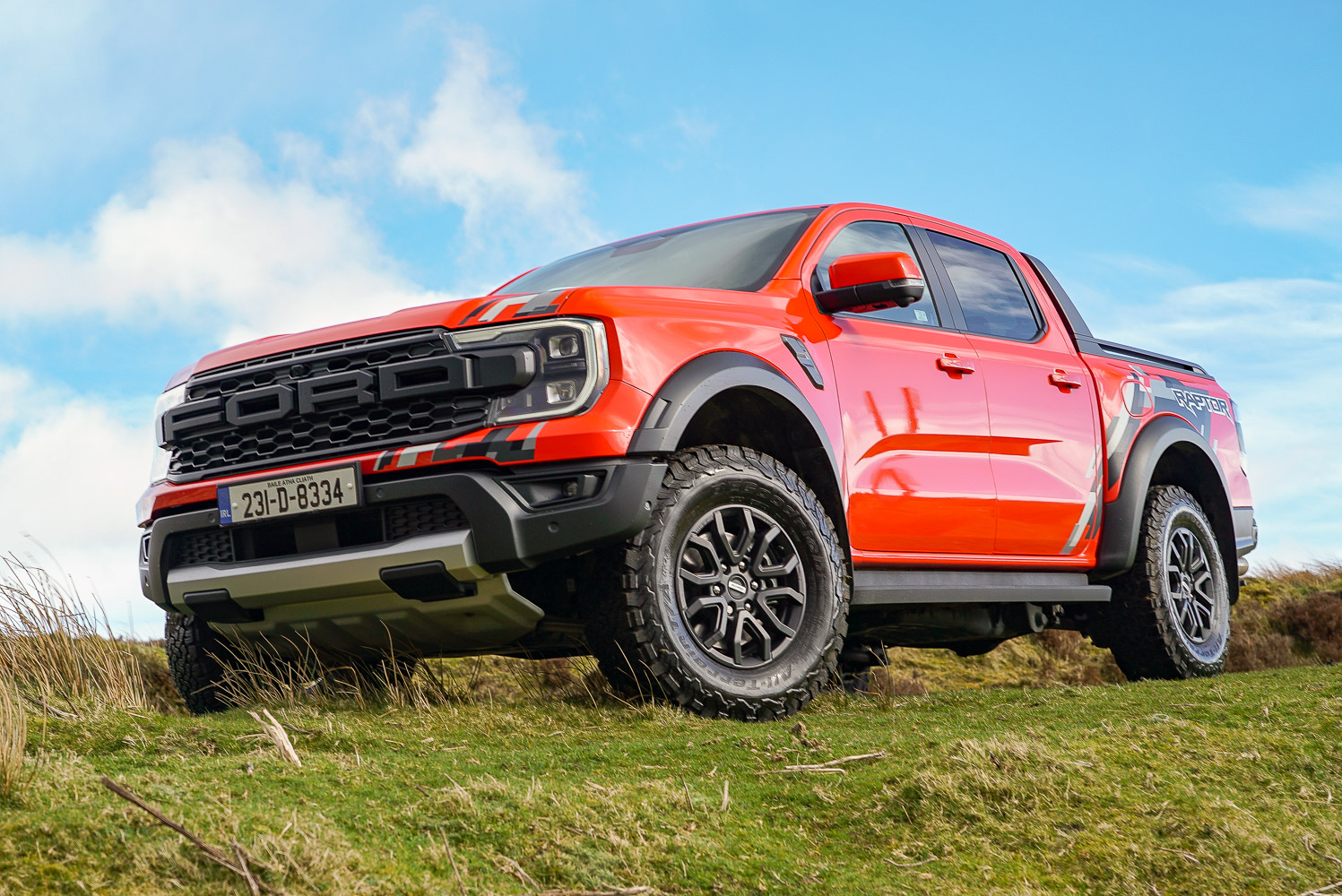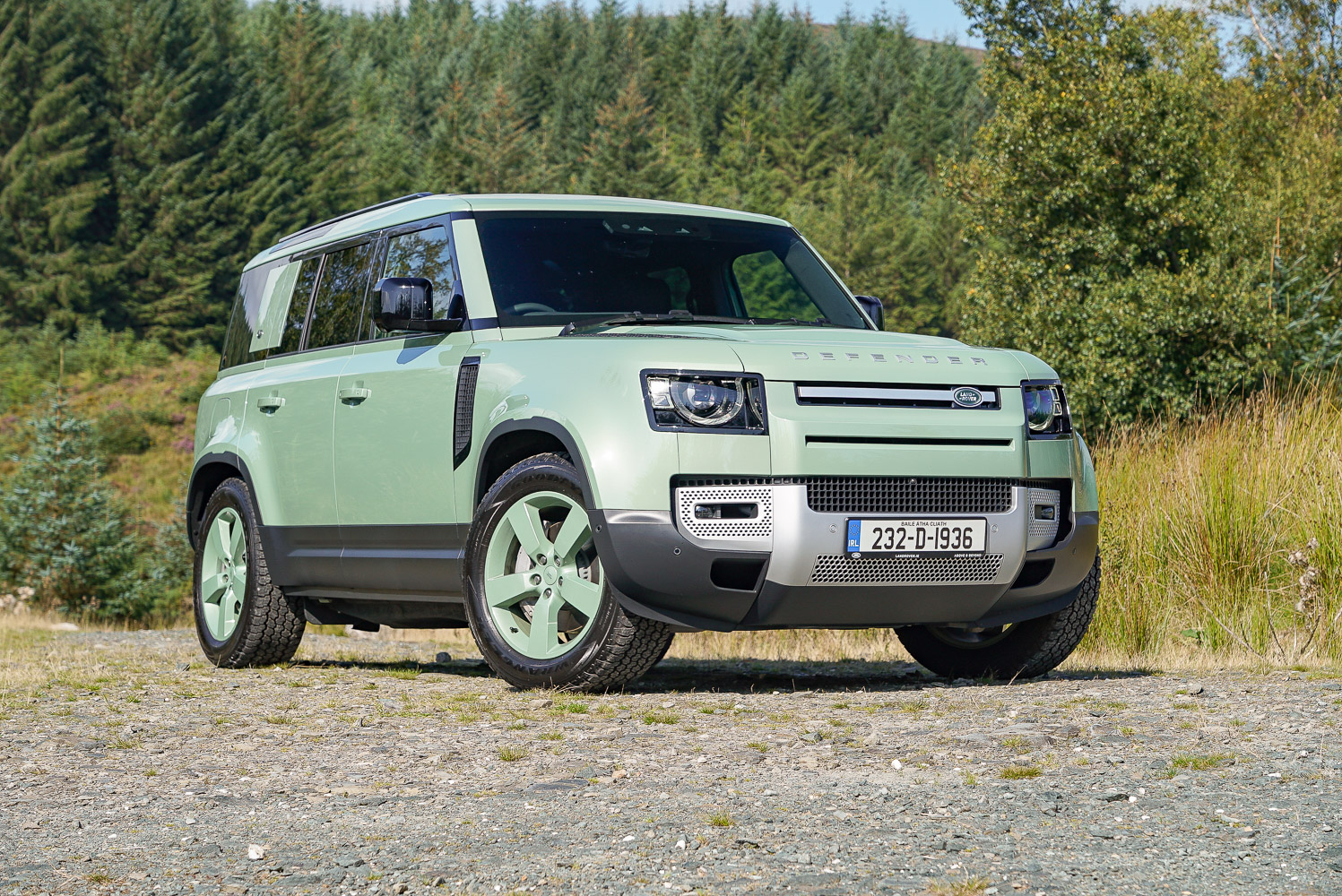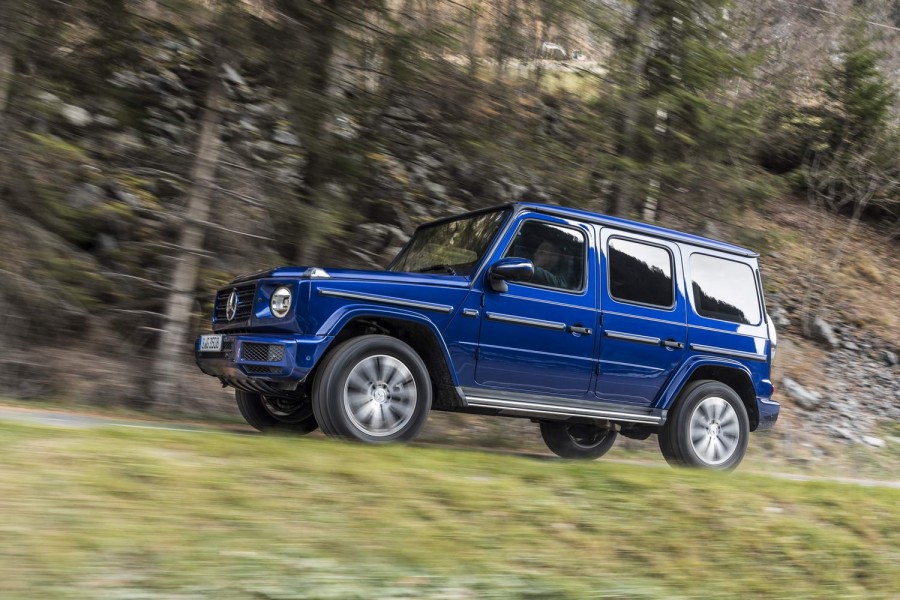Ineos Grenadier range overview
Ideas dreamed up in pubs are often the best ideas, ever. Usually, sobriety and the dawn erase the plans from collective mental whiteboards, but in the case of Jim Ratcliffe the pub idea turned into a deal with some of Europe's biggest car makers and suppliers, and the purchase of a vast factory in France to build this, the Ineos Grenadier.
The idea for the Grenadier really was dreamed up in a pub. In fact, the car draws its name from The Grenadier Inn, in which the first ideas were drawn up. To be fair, Ratcliffe is better placed than most to put his pub ideas into action - he's a billionaire, and the man behind the vast Ineos group, which is better known for being a chemical company, and a major sponsor (part-owner in fact) of the Mercedes-AMG F1 team. Ratcliffe has also, very publicly, been dabbling with buying big chunks of Manchester United of late, but the Grenadier is the most tangible evidence of his ability to pursue an idea to its conclusion.
Ratcliffe basically wanted to keep the Land Rover Defender in production, approaching Land Rover as the company was winding down the original version in 2017 with a mind to buying up the rights and the parts to keep the classic 4x4 going. Land Rover, perhaps unsurprisingly, rebuffed this approach, unwilling to potentially undermine its own reinvention of the Defender. So Ratcliffe and his team repaired to The Grenadier and dreamt up the Grenadier.
Creating a new car and new car maker out of essentially nothing is not easy, but Ratcliffe and the Ineos team decided that the best thing to do would be to simply go to the people who already have the best stuff and buy it. So, the Grenadier is powered by BMW turbocharged straight-six engines in either petrol or diesel forms, while the engineering of the car was outsourced to Magna Steyr in Austria, which has more than a little form in this area, having spent decades making the G-Wagen, latterly G-Class, for Mercedes.
Even a ready-to-go factory was found - the former Smart factory in Hambach, France was snapped up to be the Grenadier's home. That in itself was controversial; Ratcliffe was an outspoken supporter of Brexit, yet his car has been engineered in Austria, made in France and uses German engines. Indeed, there is a conjoined British and German flag motif on a badge on the Grenadier's front wheelarch, to mark the spirit of European co-operation in its creation.
Design-wise, it's easy - lazy, perhaps - to pass off the Grenadier as a Defender pastiche, but while there are undeniable similarities, there's at least as much original G-Wagen in the car's visual makeup, and yet it's not quite a clone of either. There's something in the stance, and in the shape of the bonnet, that gives the Grenadier just about enough of a character of its own. Equally, as soon as you see it, you can tell it's a very different car to the new Land Rover Defender, which is subtly moving ever closer to the Range Rover in its style and deportment. The Grenadier is far more obviously a working vehicle, not an SUV.
The INOES Grenadier model range
Ineos offers two engines for the Grenadier, and both are BMW 3.0-litre straight-six units. You can choose from petrol or diesel, and both come with the same ZF-sourced eight-speed automatic gearbox, which drives all four wheels through a high and low ratio transfer 'box, for serious off-roading.
The Utility Wagon is the entry point to the Grenadier range and is an N1 commercial vehicle whether you buy it in two-seat form (as we're testing here) or as a crew-cab five-seater. Irish prices start from €88,499 including VAT for the two-seater, rising to €125,890 for the five-seater. There are also two five-seat passenger versions, called the Trialmaster and the Fieldmaster, both of which are listed at a price of €138,495. The difference between the passenger and N1 commercial five-seaters is the shape and size of the rear seats - in the commercial version, these are bolt upright, slightly cramped and not adjustable. The Trialmaster and Fieldmaster both have more comfortable rear-seat accommodation. As yet, there is no seven-seat option for the Grenadier but there is a crew-cab pickup called the Quartermaster, for which Irish prices have not yet been issued.
The difference between the Trialmaster and Fieldmaster is one of nuance. The Trialmaster (both models are named after products in the famous Belstaff clothing range, which Ineos owns) is the more overtly rugged model, with a raised external air intake, 17-inch wheels, an access ladder for the roof, interior utility rails, an auxiliary battery, a power-take-off connection, front and rear differential locks and BF Goodrich All-Terrain KO2 tyres.
The Fieldmaster is - slightly - more aimed at the leisure market, and comes with 18-inch alloy wheels, individual sunroofs over the driver and front passenger seats, leather trim, heated front seats, a premium sound system and carpets. Both versions come, as standard, with the 'Smooth Pack' which includes a rear-view camera, front parking sensors, powered and heated door mirrors, heated windscreen washer jets, a lockable central box under the front seat armrest, puddle lights under the door mirrors and ambient interior lighting, plus auxiliary charging points.
As standard, all models from the Utility Wagon upwards come with asymmetric rear cargo doors, an eight-speed automatic gearbox, permanent four-wheel drive with centre differential lock, LED headlights and brake lights, a full-size spare wheel, 'Pathfinder' off-road navigation system on the central 12.3-inch touchscreen, Recaro front seats, 17-inch steel wheels, climate control, wireless Apple CarPlay, wired Android Auto and cruise control.
CO2 emissions for the Grenadier start from 286g/km for the diesel versions, rising to 325g/km for the petrol models.
The Grenadier has not been tested by Euro NCAP for safety, but it does come as standard with stability control, traction control, tyre pressure monitoring, trailer stability assistant, intelligent speed monitoring, lane departure warning, automatic emergency braking and driver drowsiness detection.
All Grenadiers come with a five-year unlimited mileage mechanical warranty, and a 12-year anti-perforation warranty. Parts and accessories are covered by two-year and three-year warranties, respectively.
The Ineos Grenadier interior
To say that the Grenadier's cabin is focused on its hard-working tasks is a bit like saying that the Rock is somewhat muscly. Or that Margot Robbie is passingly attractive. The Grenadier's interior is task-oriented to the point where it makes the interior of a Ferrari Enzo look needlessly fussy and over-specified.
Here's an example. You start the Grenadier by placing an actual key into an actual ignition barrel and giving it a quarter-turn to the right. Having a keyless ignition system would be possible but would have necessitated an extra Electronic Control Unit (ECU) and these are expensive, sometimes difficult to maintain and not fixable if you're three quarters the way up an Alp or across the Outback. Simplicity - relatively - is the name of the game, here (although it would be nice to have a little light for the ignition barrel - it can be hard to find at night). It's why the front and rear bumpers are made up of separate sections (five at the rear, three at the front) so that if you bash a corner, it can be easily and cheaply removed and repaired or replaced.
That's the philosophy behind the Grenadier's interior. Everything, from the combined touchscreen and instrument panel to the switches and controls on the console, is focused on the centre of the cabin. Less wiring, easier to fix, easier to design and build in the first place, and no issues converting for left- or right-hand drive. In front of the driver, you'll find only the two-spoke steering wheel and a small bank of warning and indicator lights. The wheel, covered in an optional high-grade leather in our test car, gets an extra 'toot' button which politely beeps a smaller horn, leaving the bigger, angrier honks for the centre of the wheel. You'll also find buttons for the cruise control and stereo on the wheel.
The purely vertical centre console houses big, chunky buttons for the climate control, stereo, parking assist and start-stop system. These are clearly modelled on the switches of military jets, or the Apollo spacecraft, and look utterly fabulous. Every other touchscreen-obsessed car maker needs to sit in a Grenadier and take in the majesty of this console, although it is a disappointment that the rotary controllers for the stereo volume and climate settings feel rather loose and a little fragile.
Look up, and you'll find more chunky switches in the roof. These are for the Grenadier's off-road modes, the differential locks, hill descent control and cabin lights. There are also some blank toggle switches, which connect to pre-wired power points dotted around the outside of the car and the cabin. These are ideal for those who want to fit extra lighting inside or out, or heavier-duty items such as a winch. When they're not connected to anything, you can just drive along clicking them back and forth, pretending to be Jim Lovell on his way to the Moon and back. Silly, but immensely satisfying.
Directly below, there's the lever for the automatic gearshift (familiar from generations of BMWs, and oddly still with the marking for the Sport setting, even though the Grenadier has no such setting), a hefty manual lever for the low-range gears, two cupholders, a big manual handbrake and a rotary controller and shortcut buttons for the screen which sits atop the dashboard.
This is reasonably easy to operate, although we do have to raise the usual issues of distraction and line-of-sight problems caused by having your speed readout and other major driving information on it along with the infotainment system. Thankfully, the menu is straightforward (helped no doubt by the physical climate and heated seat controls) and the huge amount of information you can draw upon - from tyre pressure and temperatures to angles of roll and pitch - are potentially useful for serious off-roading, and usefully entertaining when stuck in traffic. Our car had a big Ineos logo under the screen, in a round setting, but that can be optionally replaced by a compass.
Seat comfort isn't too shabby. The seats themselves are made by Germany's famed Recaro company, so they're supportive, and although the vast size of the gearbox casing means that the pedals are offset to the right, the actual driving position is fine even for longer journeys. Certainly, if you are stepping out of an original Land Rover Defender, you'll be astounded at the comfort and adjustability on offer. Between the seats is a large lockable storage box (you'll find two USB sockets in there too), but there is a slight lack of truly useful storage space in the Grenadier, as the door pockets are not massive and there's no storage space on the dashboard bar the glovebox, which is also not that big.
This being a commercial Utility Wagon, our test car had no back seats, but we can tell you from a brief spin that the rear seats of the N1 five-seat Utility Wagon are way too upright and cramped for anything but short hops to the building site, while the seats in the back of the Trialmaster and Fieldmaster are perfectly comfortable and plenty spacious enough. The rear of the Utility Wagon, separated from the front seats by a wire mesh divider, is vast - capable of holding more than 2,000 litres of cargo and a potential 796kg payload. The split doors at the back mean you can open the entire rear of the Grenadier (the old Defender had only a relatively narrow central door) although the '30 per cent' side, which can be useful in tight confines, is a bit too narrow to allow you to get more than one arm in. The floor is covered in a hard-wearing plastic, and there are built-in drain holes for hosing out after carrying anything mucky.
The Ineos Grenadier Utility Wagon driving experience
As the Grenadier is supposed to be the spiritual successor to the original Land Rover Defender, you'll be expecting it to drive like one. And you'd be right, but there are significant differences. For a start, other than the tiny handful of V8-engined models, the original Defender never had an engine as smooth as this BMW straight-six. True, it's on the loud side and you can feel the engine having to build up some momentum on a cold start to get all those diffs and transfer cases moving, but when you're cruising this is a mechanically refined engine. There's plenty of power too, even if the almost-ten-second 0-100km/h time is hardly the fastest out there. Up to 550Nm of torque means that there's usually plenty of poke in reserve for a quick bit of tip-in power, too. Fuel economy isn't great though - we averaged 13 litres per 100km.
Given the Grenadier's upright stance, mostly flat glass and barn-door aerodynamics you'll be expecting plenty of wind noise once you're up to anything like main road speeds, and you'd be right. It's perhaps not as cacophonous as it could be, but you'll need to have the stereo cranked way up to hear anything shy of AC/DC with clarity.
The steering is the Grenadier's oddest dynamic component. There's no self-centring, so any lock you wind on, must be wound off. That's fine on longer, shallower corners but pulling out of junctions usually means a flurry of arms and elbows as you try to work out what the nose is doing. You do get used to it, up to a point, but it's always a little odd.
The Ineos is a big, heavy car - 2,700kg in diesel form - but it does corner reasonably well. The hefty suspension (coil springs locating chunky Carraro axles front and rear) does the usual live-axle thing of bobbing and fidgeting when dealing with bumps, but once you learn how to aim the steering properly, the Grenadier feels pleasantly predictable as you corner. It's clearly not a hot hatch, but it's equally not badly behaved. Likewise, the ride quality - lumpy, as you'd expect (the chunky BF Goodrich off-road tyres of our test car probably didn't help in that regard) but not appalling, and rarely uncomfortable.
Of course, the whole point of all these things that compromise the on-road performance - the tyres, the axles, the diffs and so on - is that they make the Grenadier seriously talented when it comes to leaving the tarmac behind. And so it proves. With the optional front and rear locking diffs (the centre one comes as standard) and with low-range gears engaged, the Grenadier is essentially unstoppable. Its only limitation is the lack of air suspension, which does somewhat raise the risk of a ground-out in extreme conditions, but realistically the Grenadier is amazing when the going gets rough.
You can use electronic hill descent control for steep descents, but to be honest it's more satisfying to use the low-ratio gears and let the mechanical drag control your speed. The approach (up to 35 degrees) and departure (36 degrees) angles mean that there aren't many slopes that will fox you, and the Grenadier's relatively trim dimensions mean that it's easier to thread between trees than some others, although the massive turn circle remains an issue in tight quarters.
However, it's worth remembering that the new Land Rover Defender is also awesome off-road, and while it is perhaps not quite as hard-work capable as the Grenadier, it's in an entirely different league when it comes to on-road refinement. Likewise, Toyota has a new (and very cool-looking) Land Cruiser almost ready for launch, which may well prove to be similarly comfortable on-road and hardly disgraced off it. Food for thought.
Our verdict on the Ineos Grenadier
Clearly, the Grenadier is limited as a privately-owned car. It's laser-focused on being a hard-working off-road vehicle and does that almost to the exclusion of the on-road refinement and comfort of rivals, including the current Land Rover Defender. However, if you are truly in need of the kind of capability which the Grenadier has, then little else will do the job quite so well. From its plug-and-play exterior electric connections to the hose-out rear cabin, to the sheer indestructible nature of its suspension and axles, little wonder that the Grenadier is getting interest from major government agencies (the kind that use a lot of blue lights) and organisations such as Mountain Rescue. That's the kind of car the Grenadier is - a true, hard-working 4x4, not a school-run SUV. Keep that fact in mind, and it's a rather pleasing, charming thing.
What do the rest of the team think?
Just in case Neil's detailed review isn't clear: the Grenadier is NOT a car to be considered as a replacement for a road-biased SUV. Sure, its Tonka Toy looks appeal to a certain part of our brains (the small kid inside us all that doesn't want to grow up), and it grabs attention like very little else on the market (supercars included), but it's too compromised a vehicle to be used only on the road. It's big, heavy, thirsty and has ponderous handling. Now that's out of the way, it's also incredibly fit for purpose and people that need such a tough, off-road capable machine for work will adore it. I had a chance to test the five-seat passenger version (the Trialmaster) and it has decent rear-seat room and comfort, too, so it can be used to transport five when needs be. In summary, most people don't need a vehicle such as this, but those that do will be glad it exists.
Shane O' Donoghue - Editor

